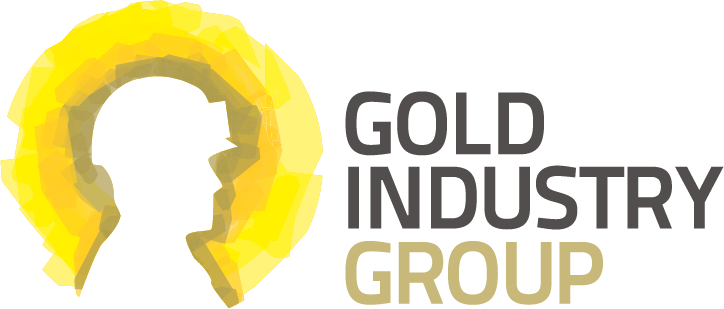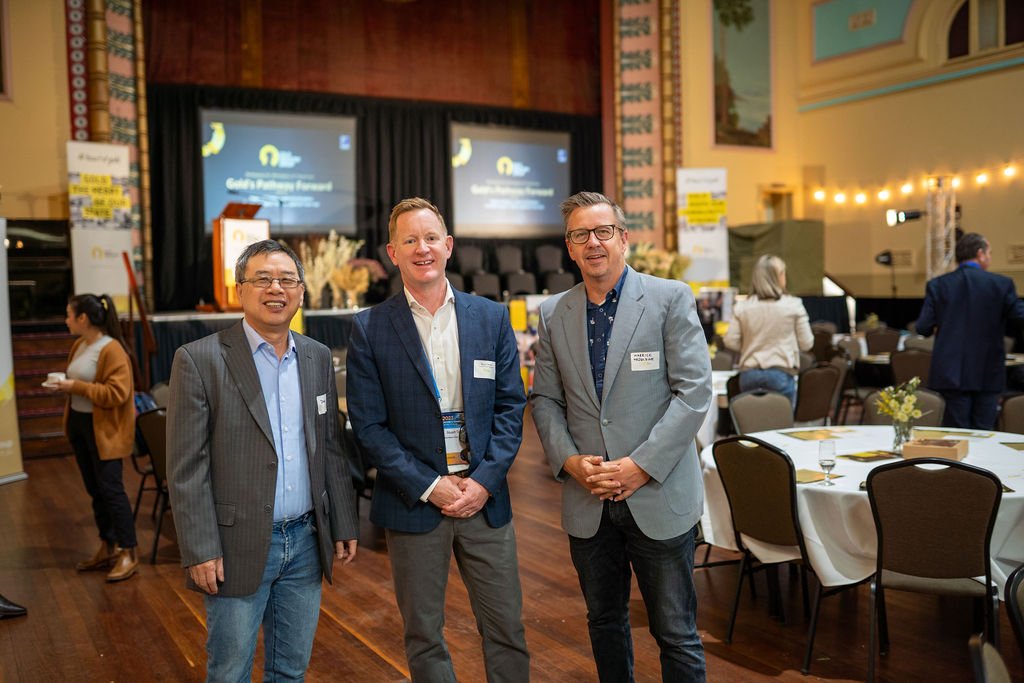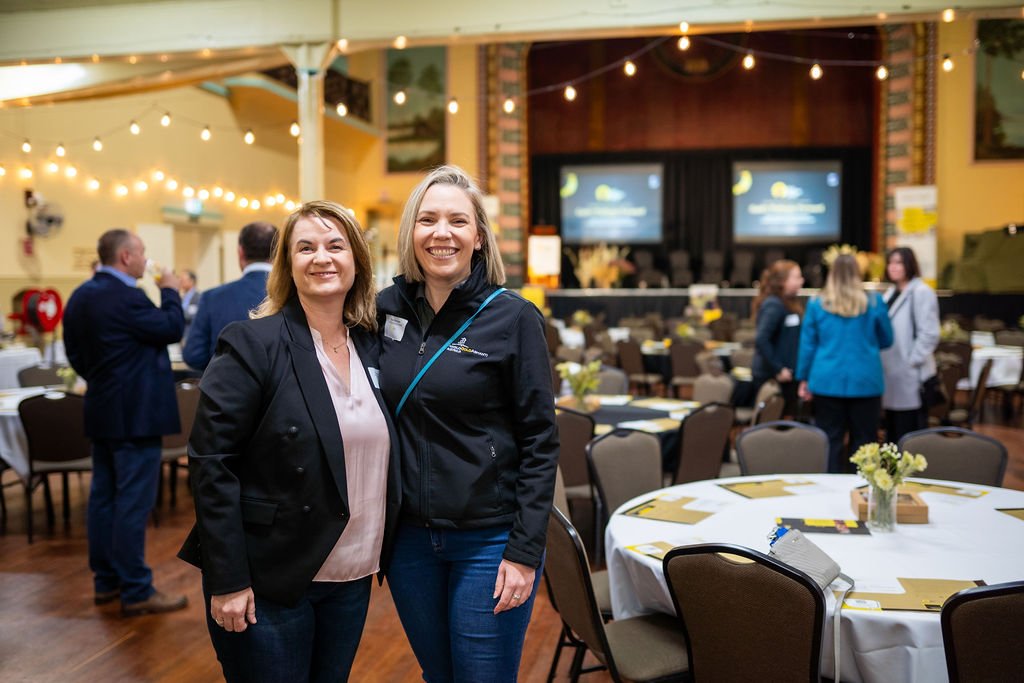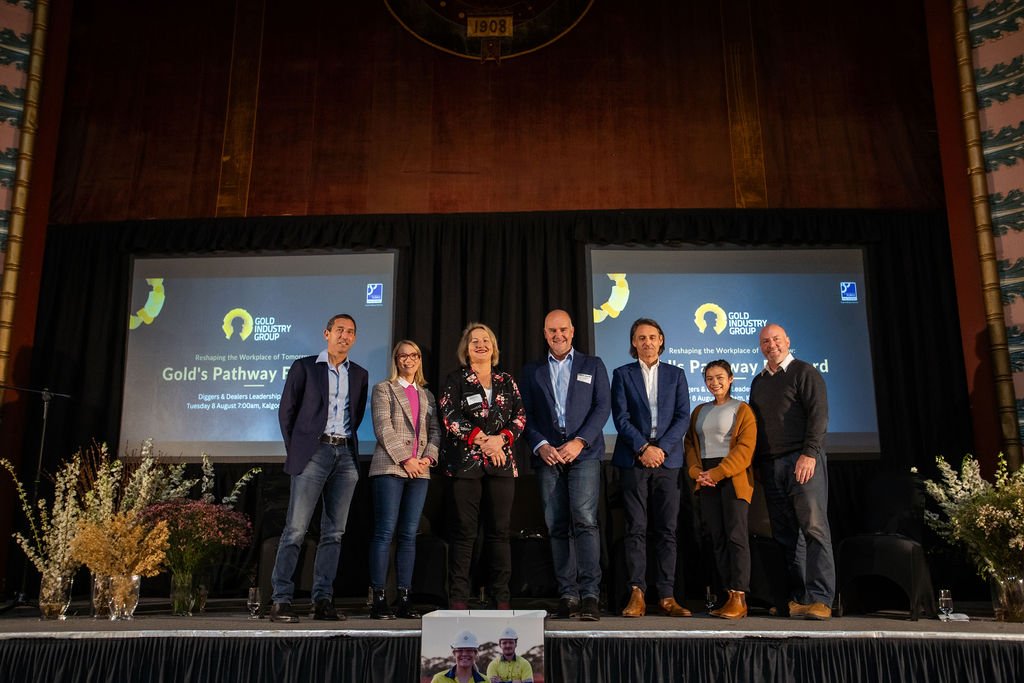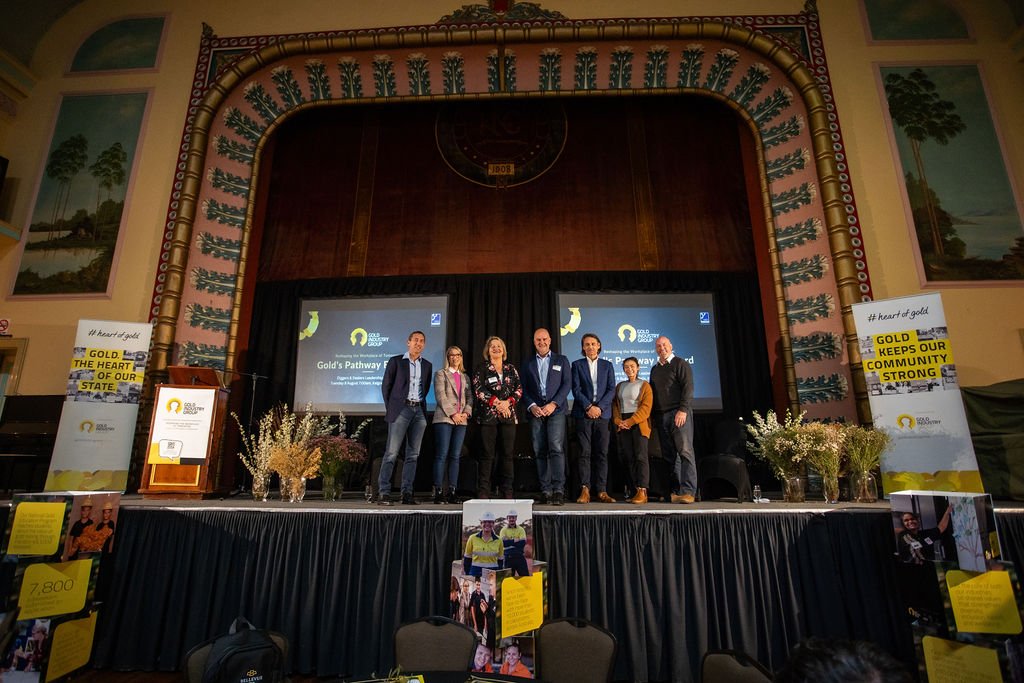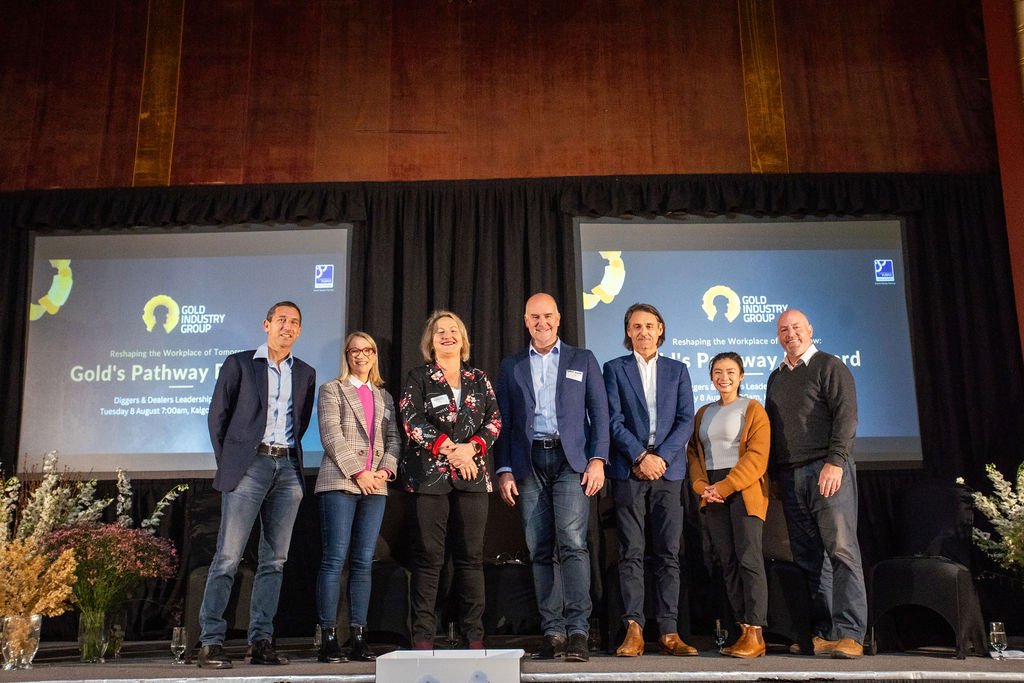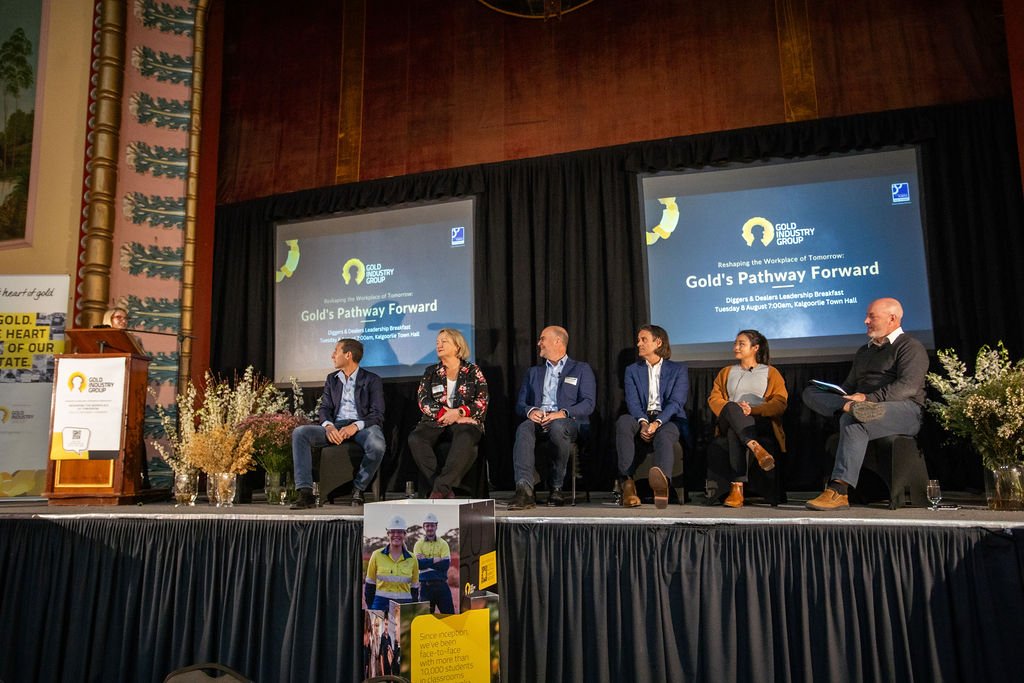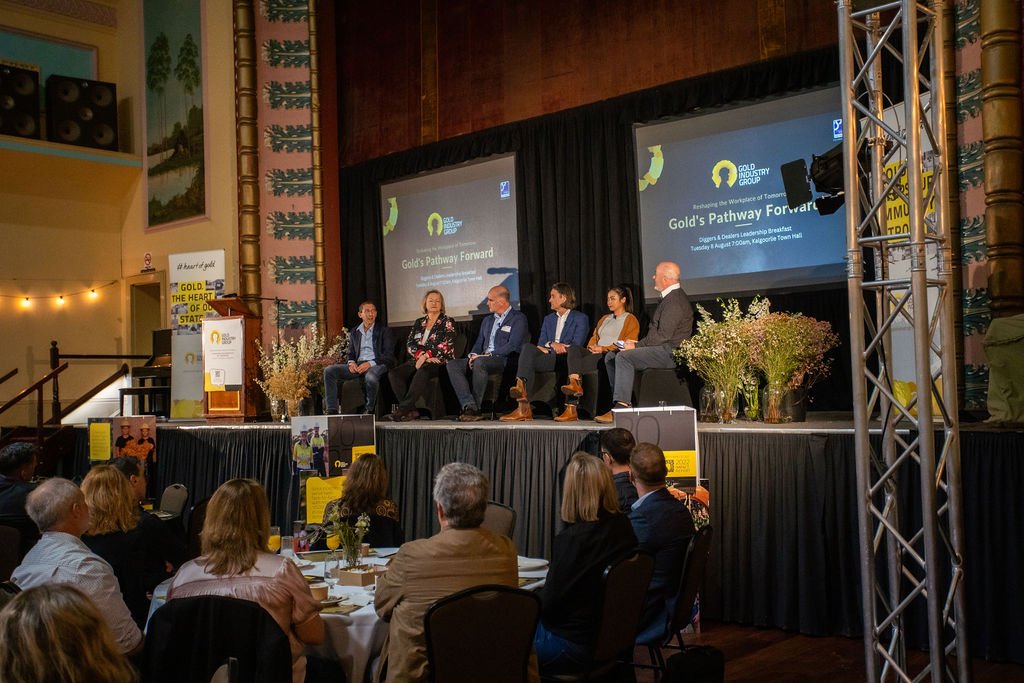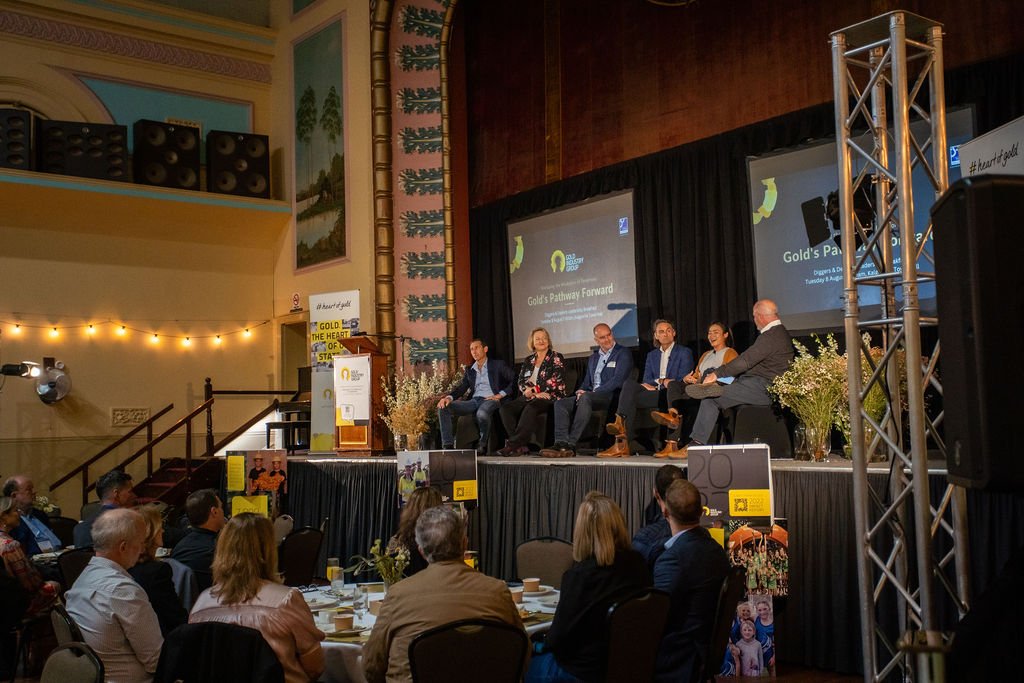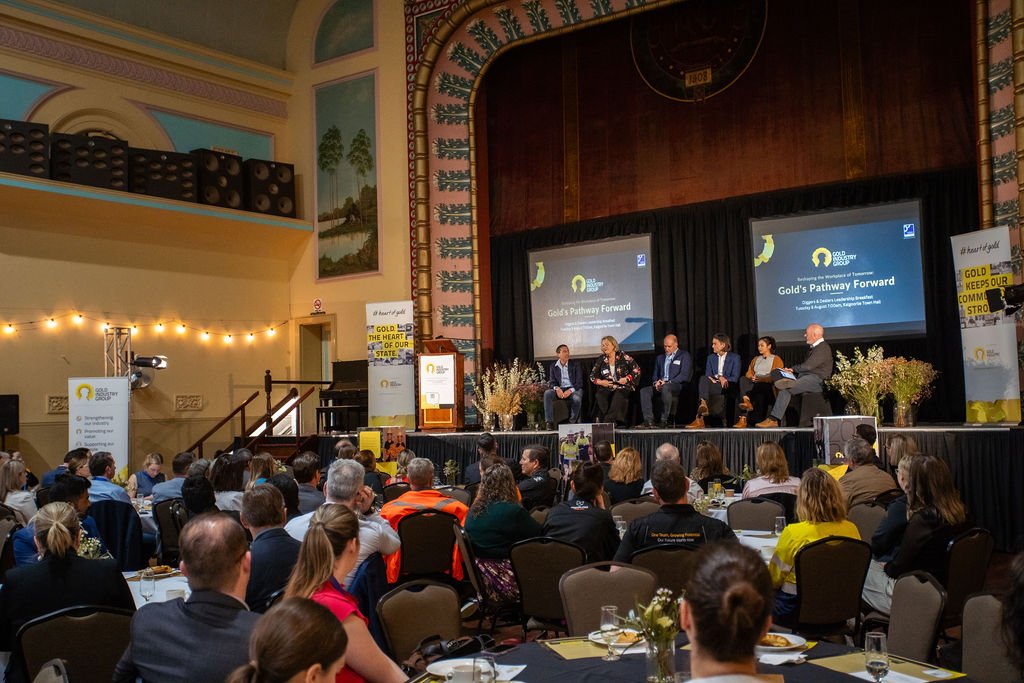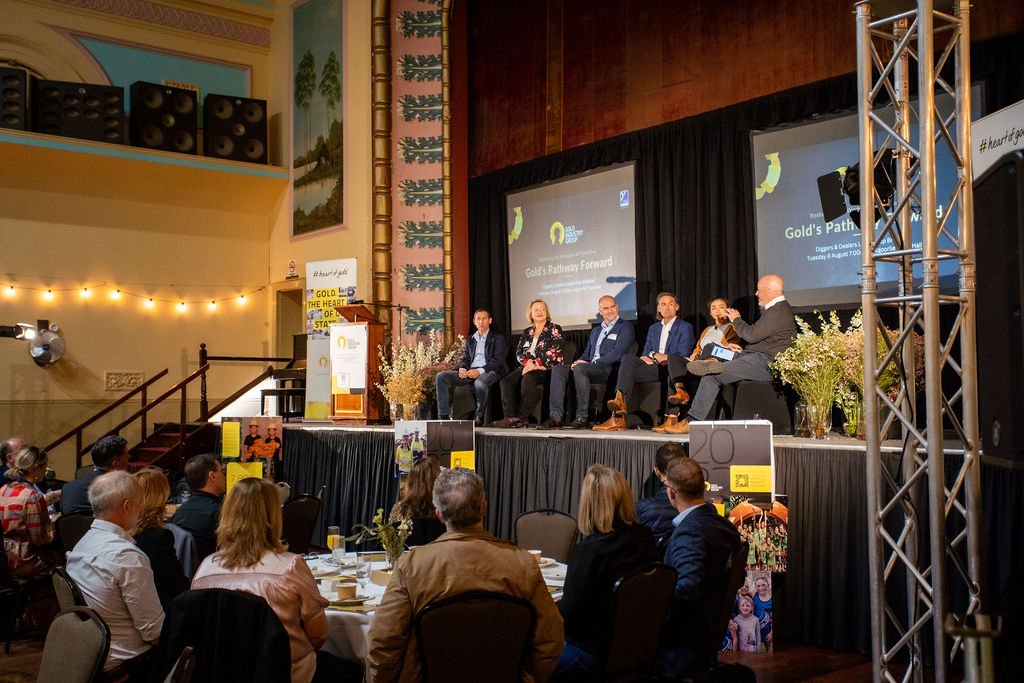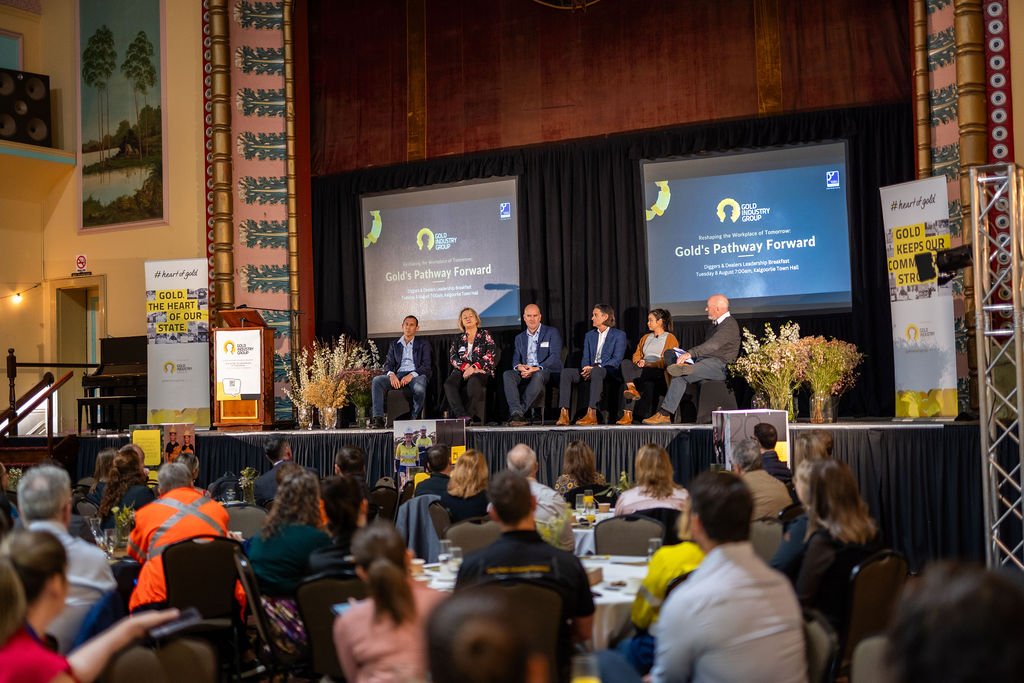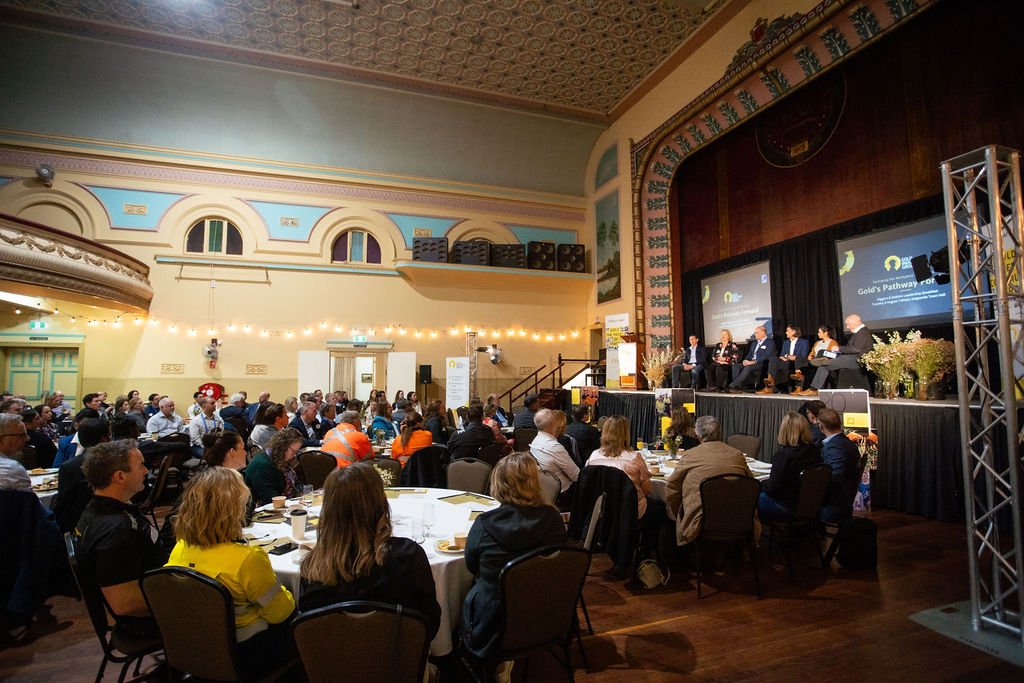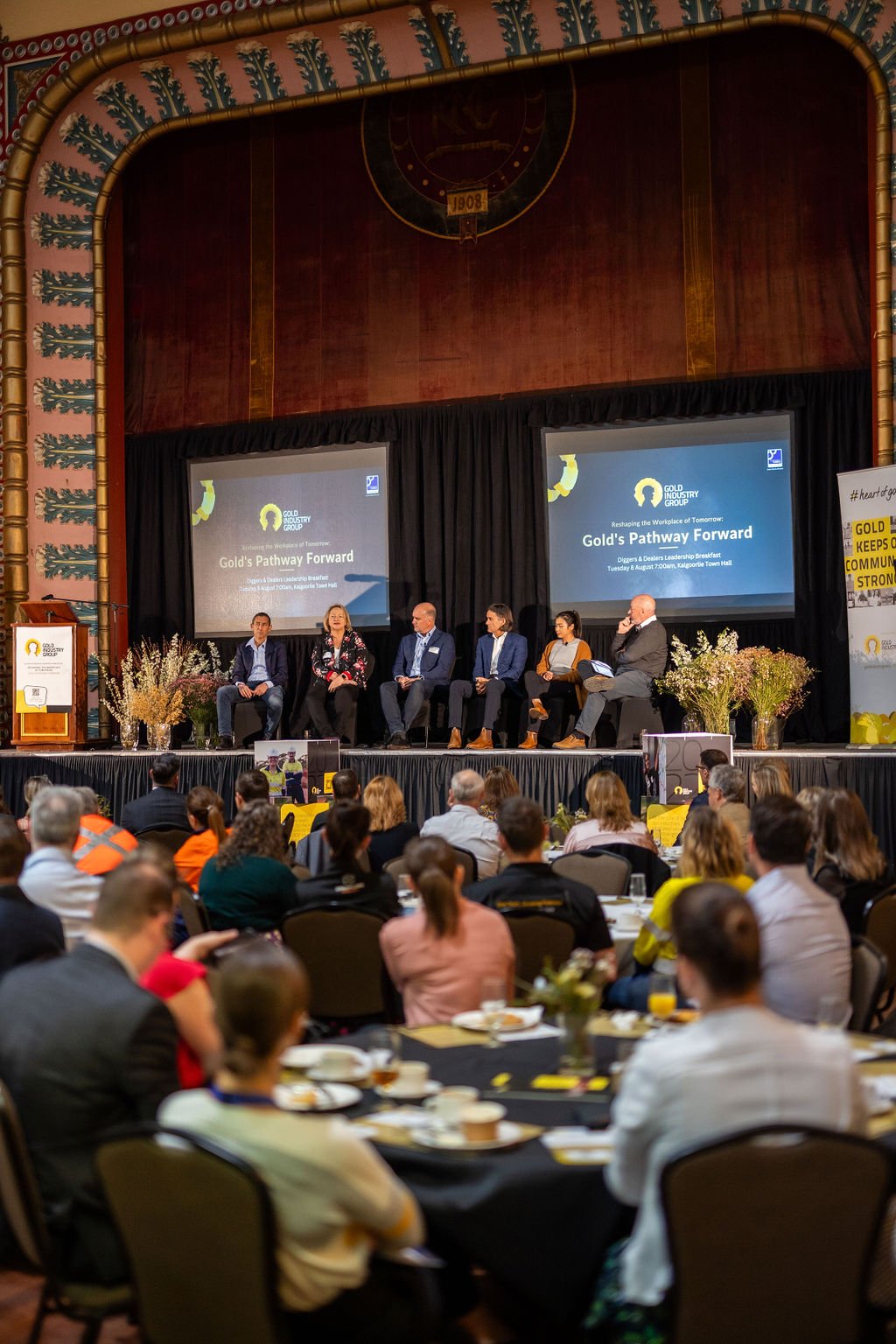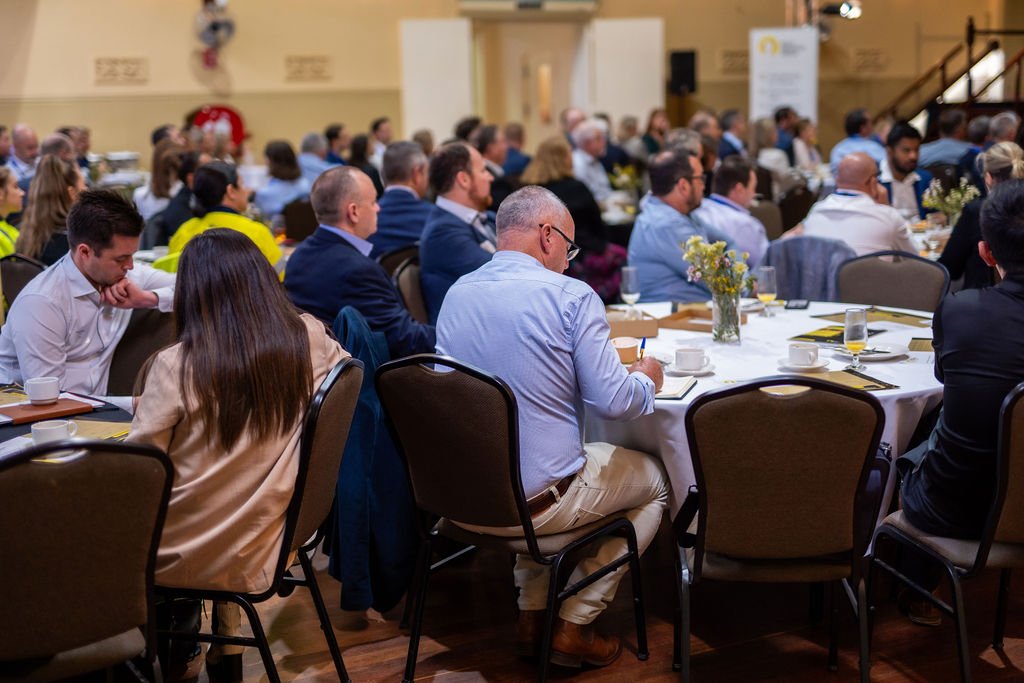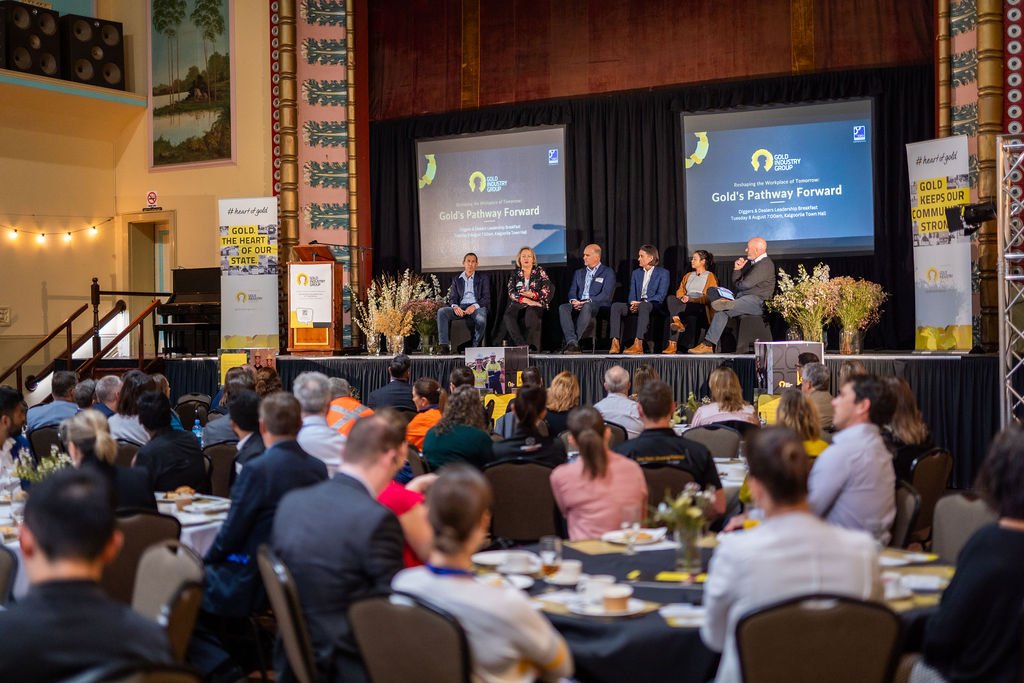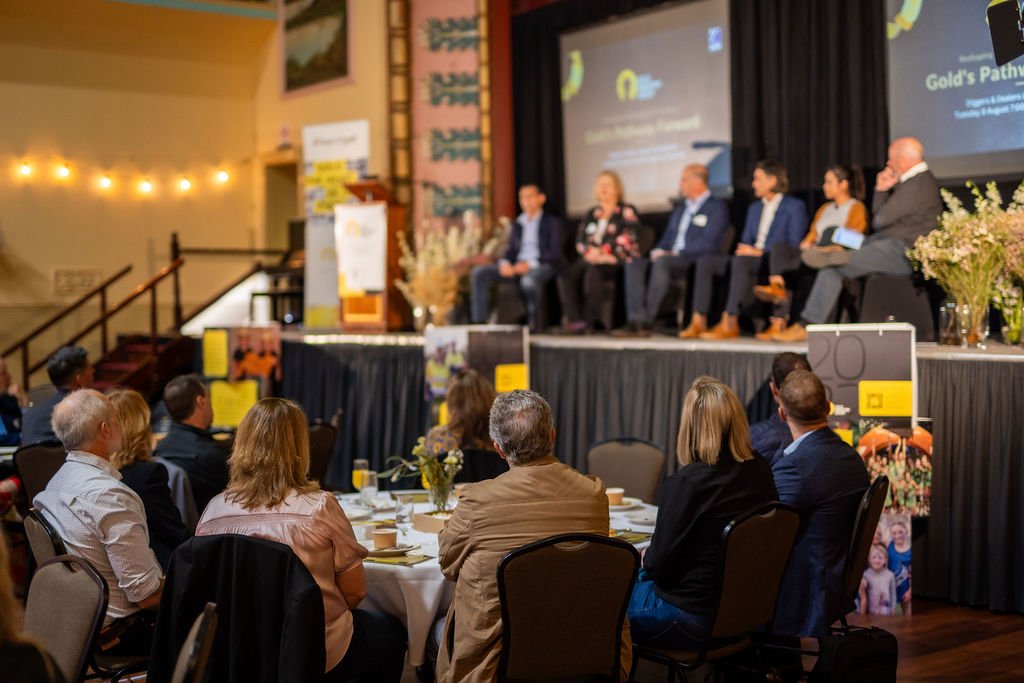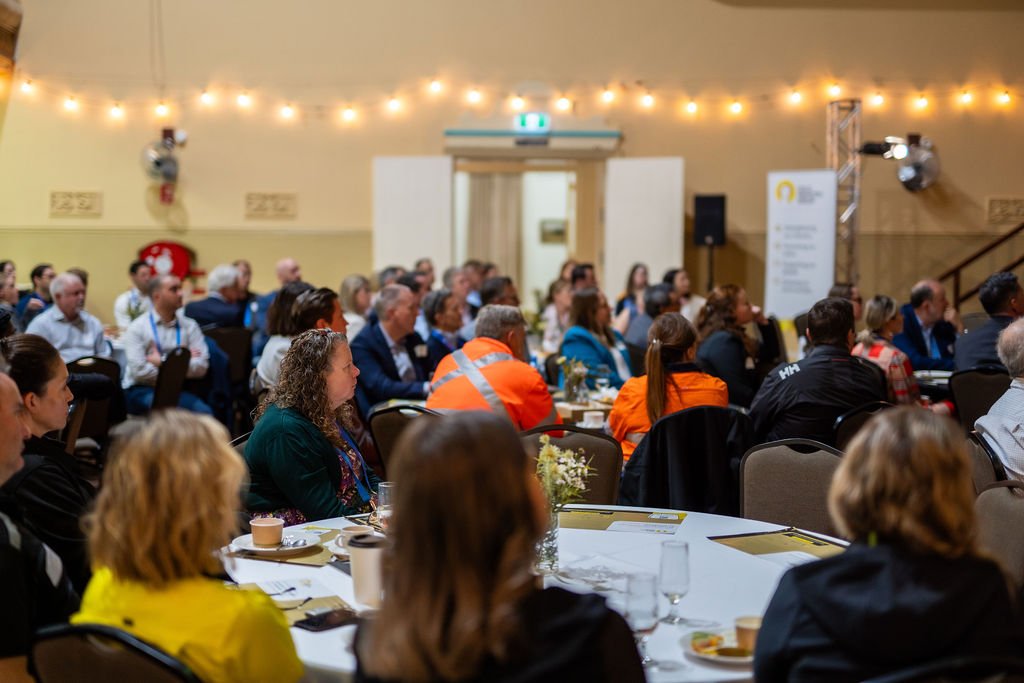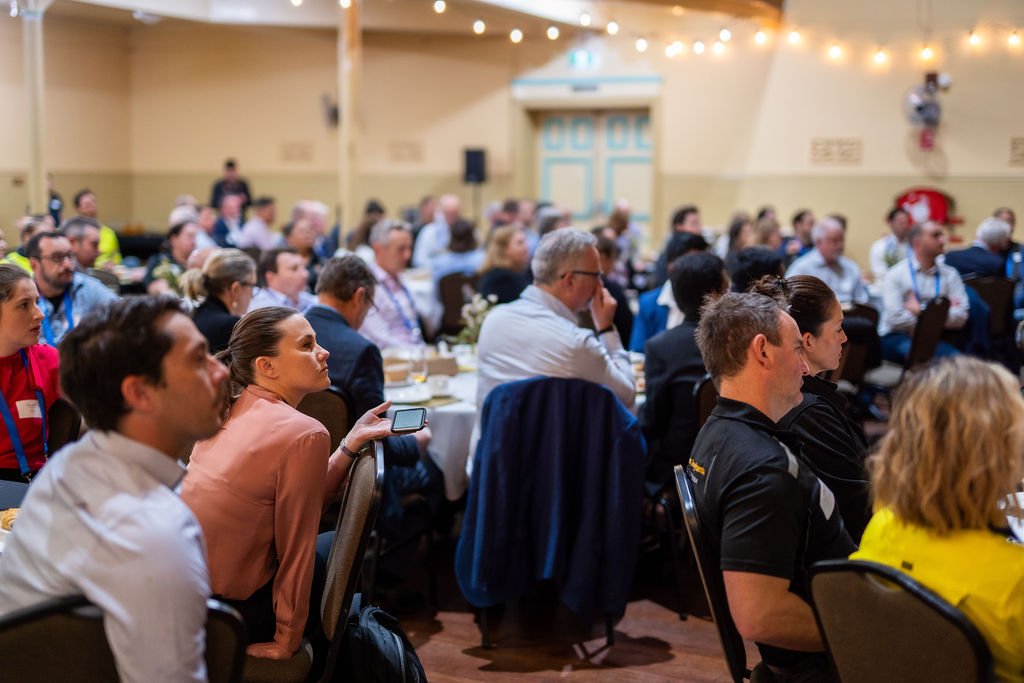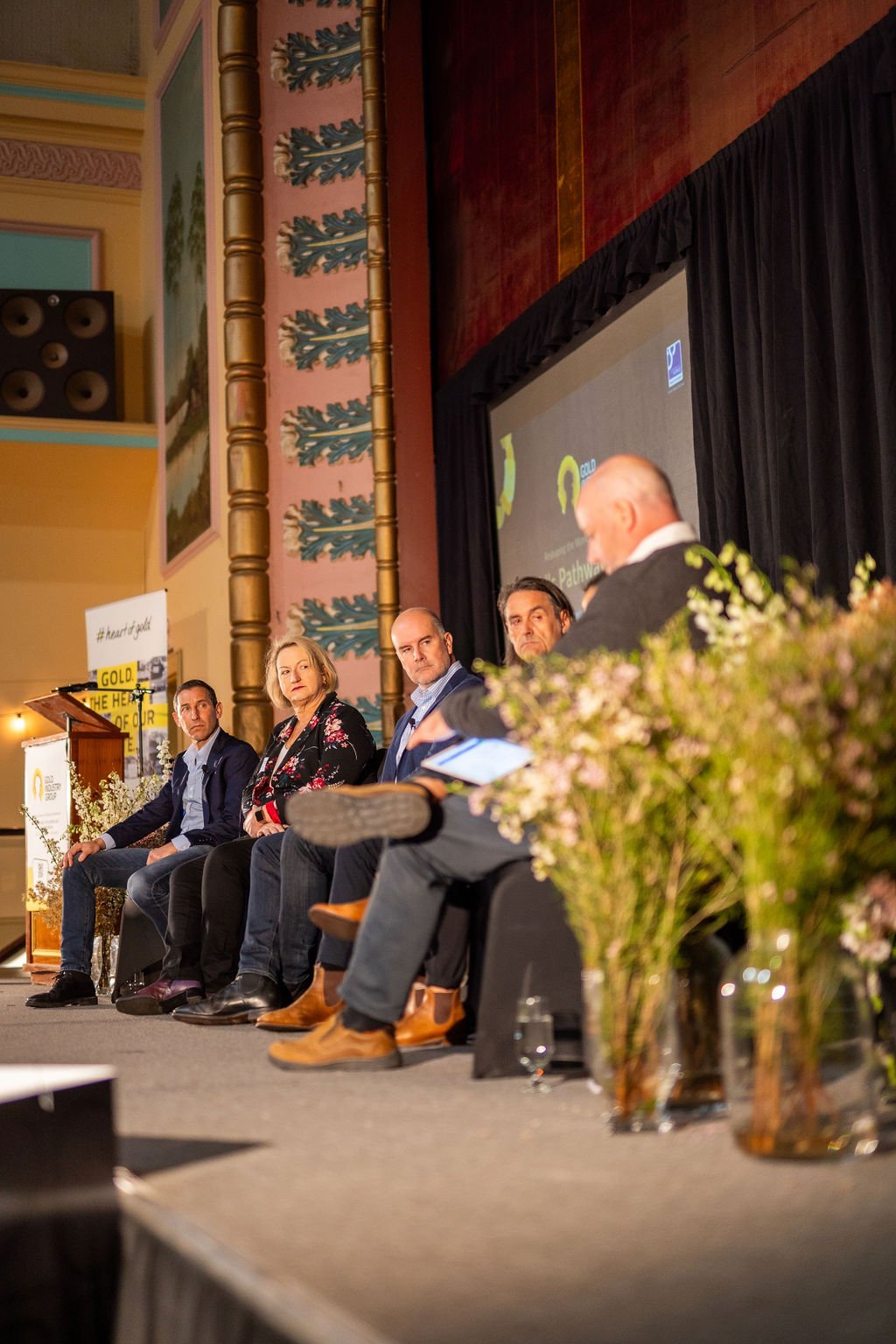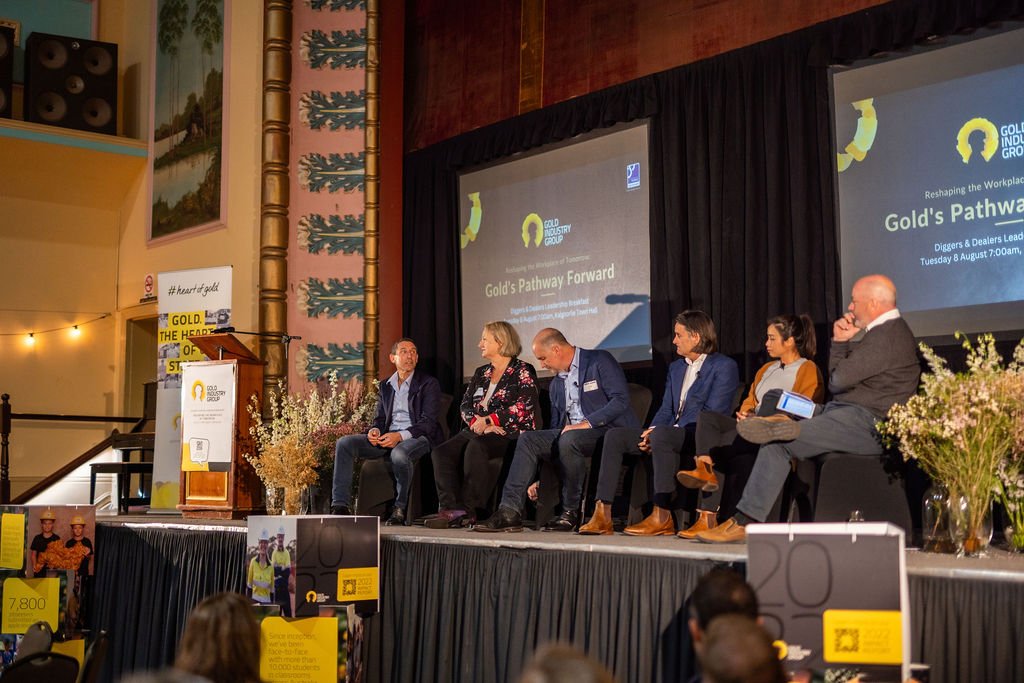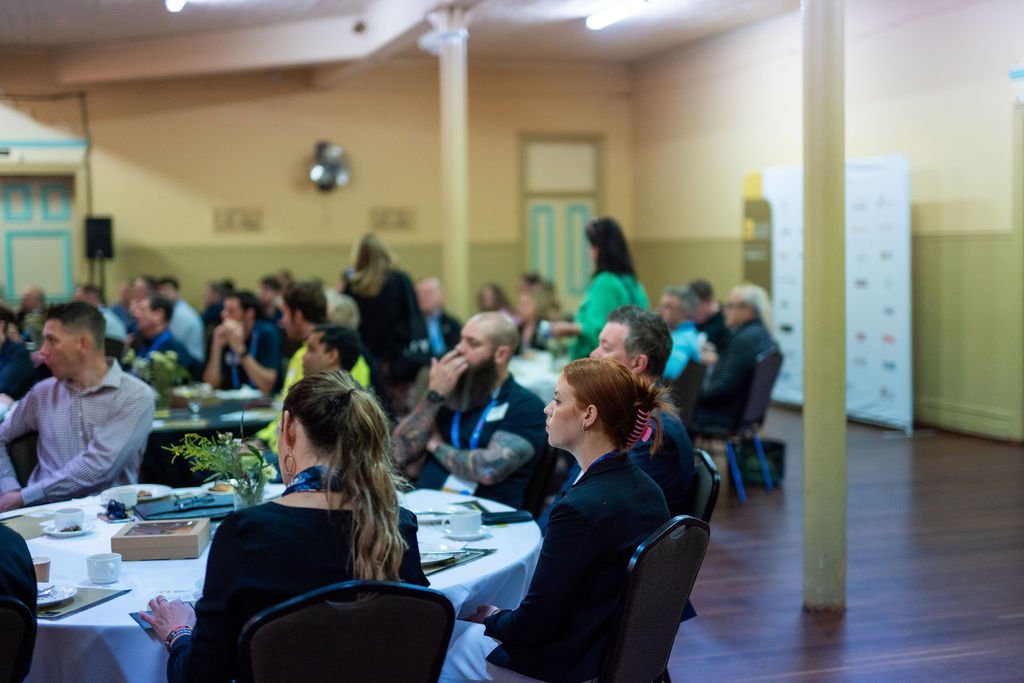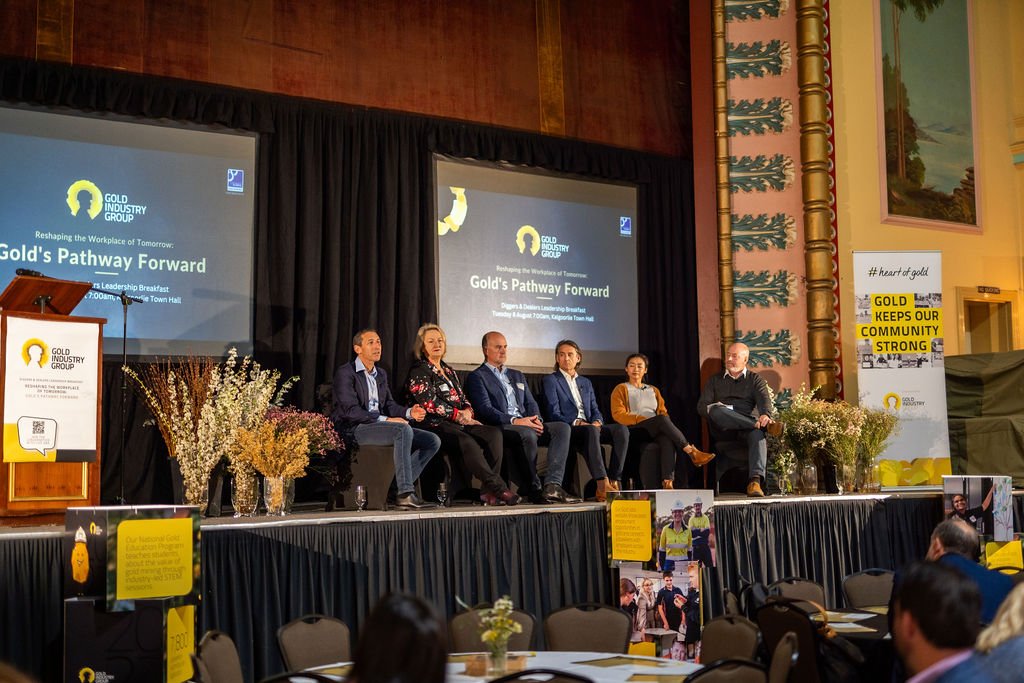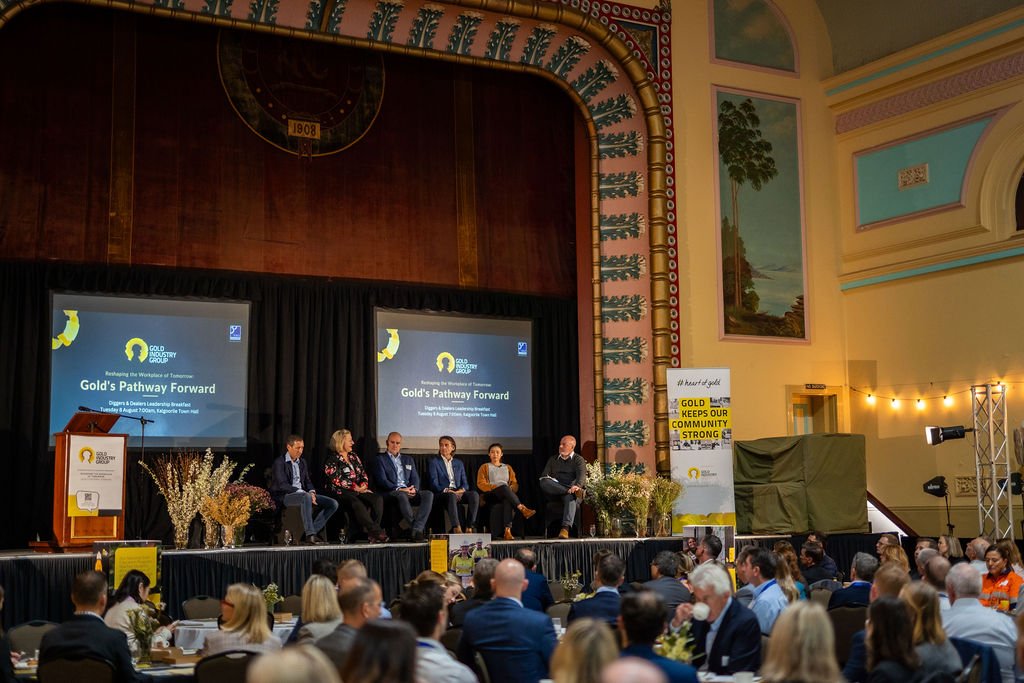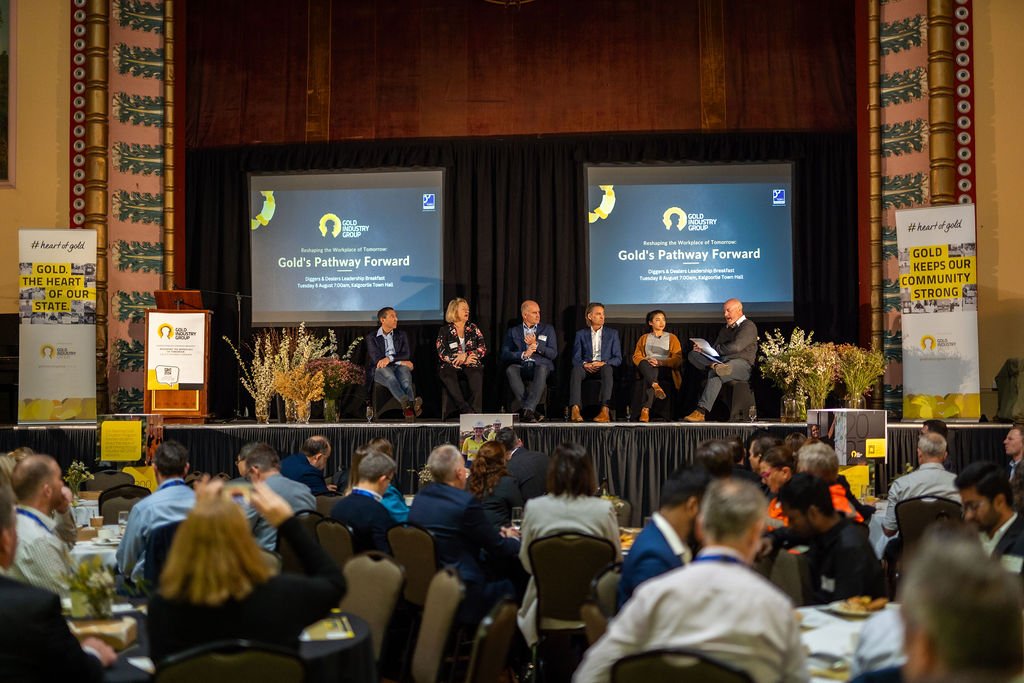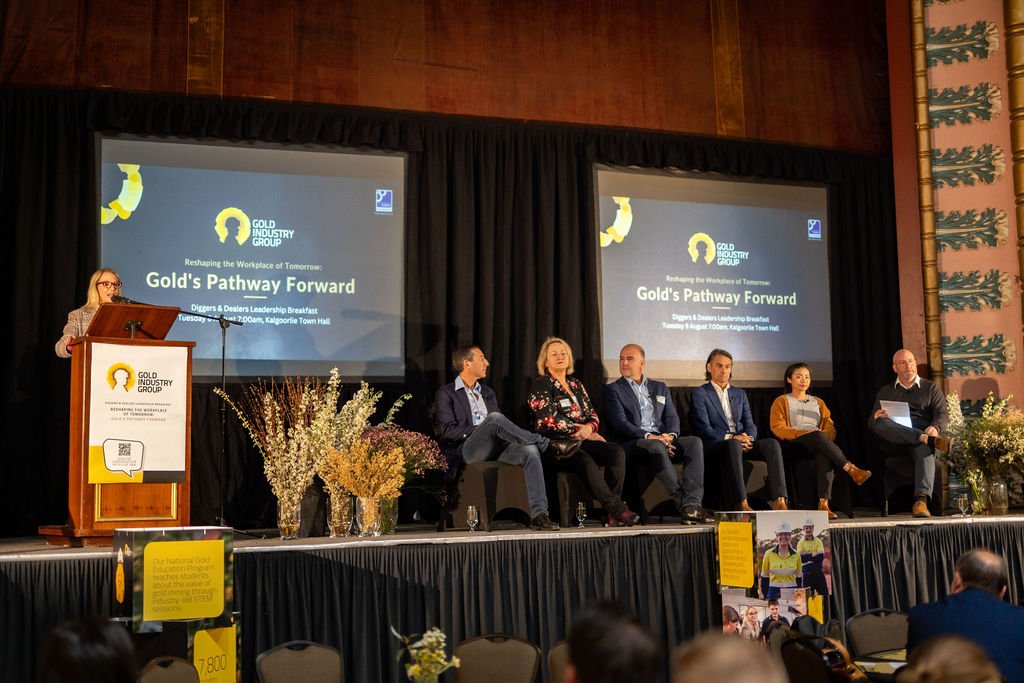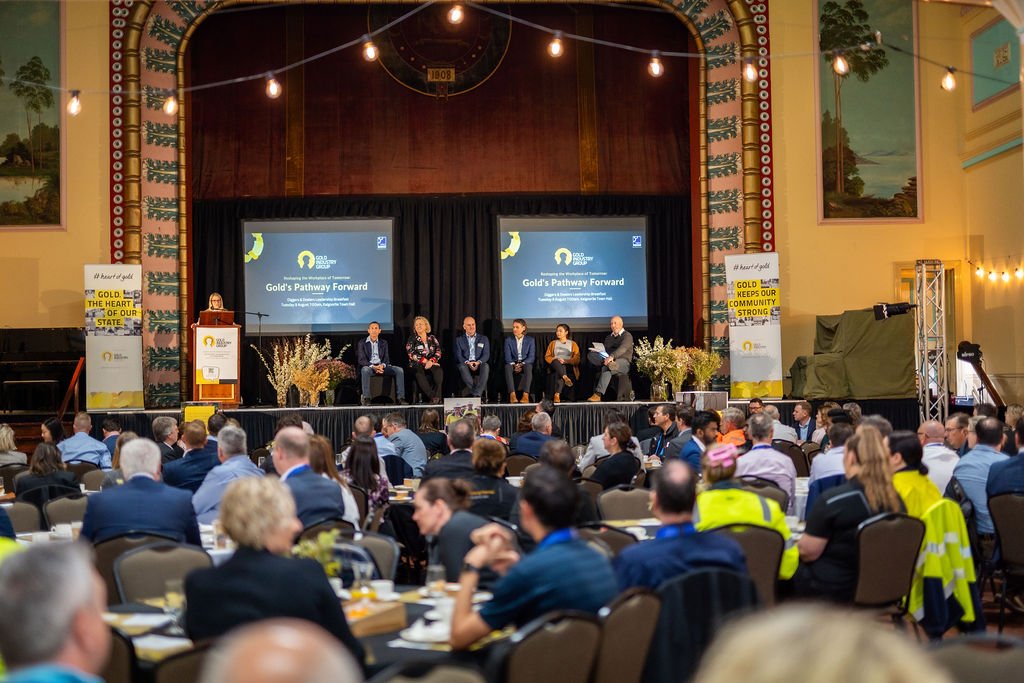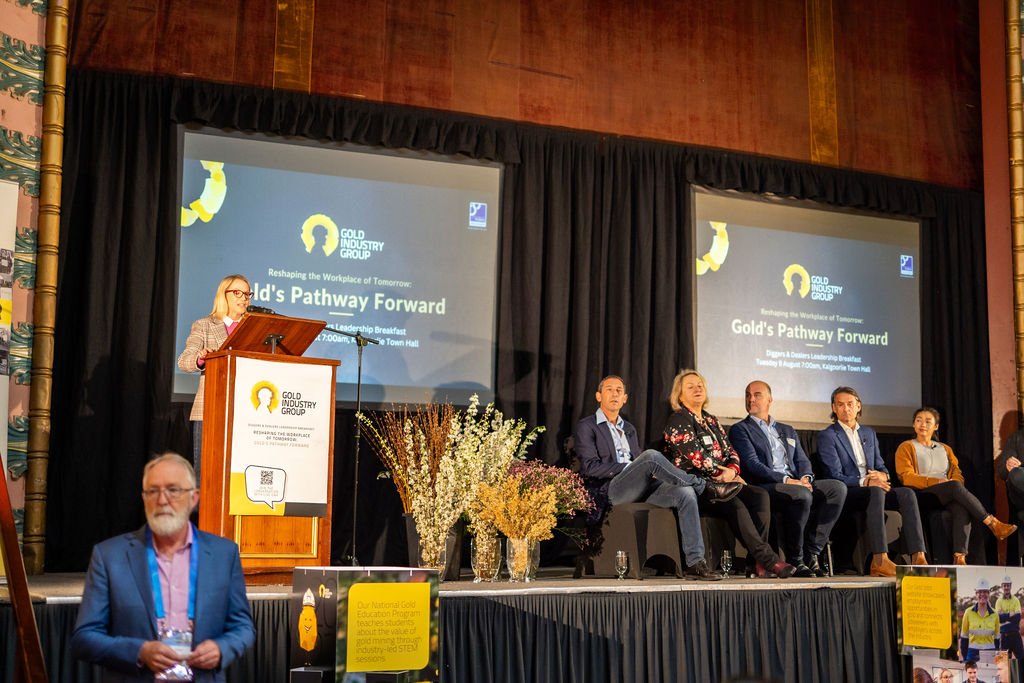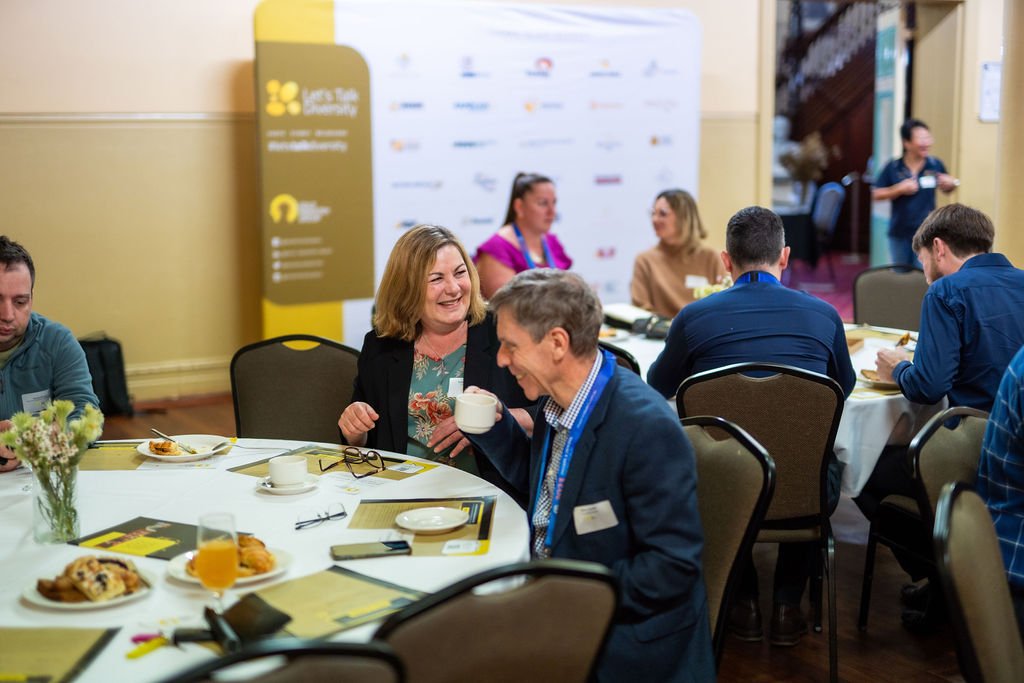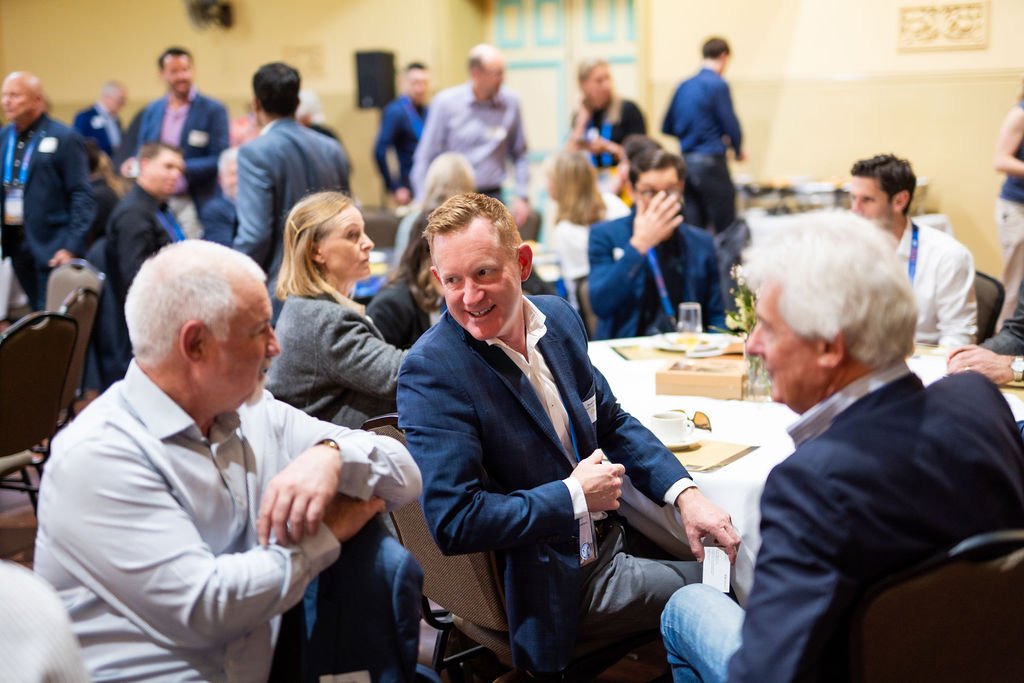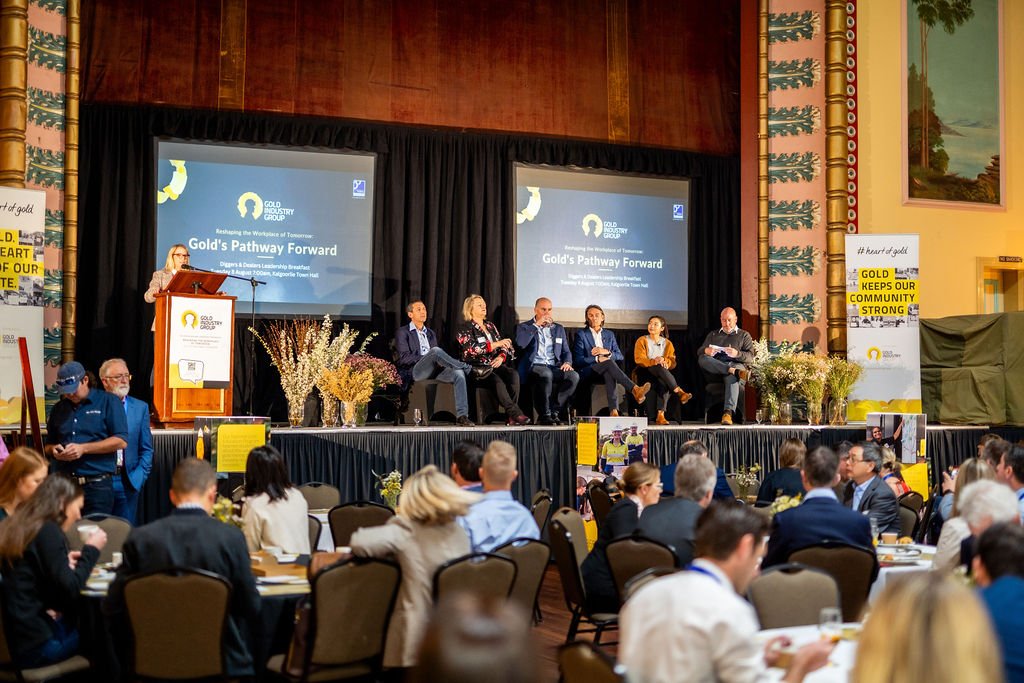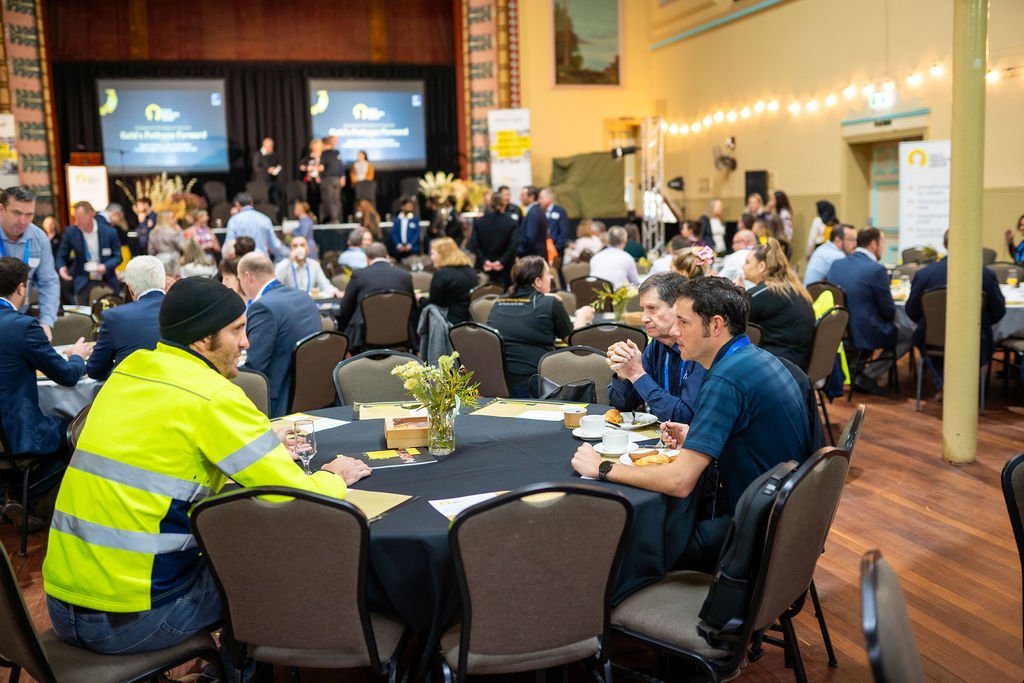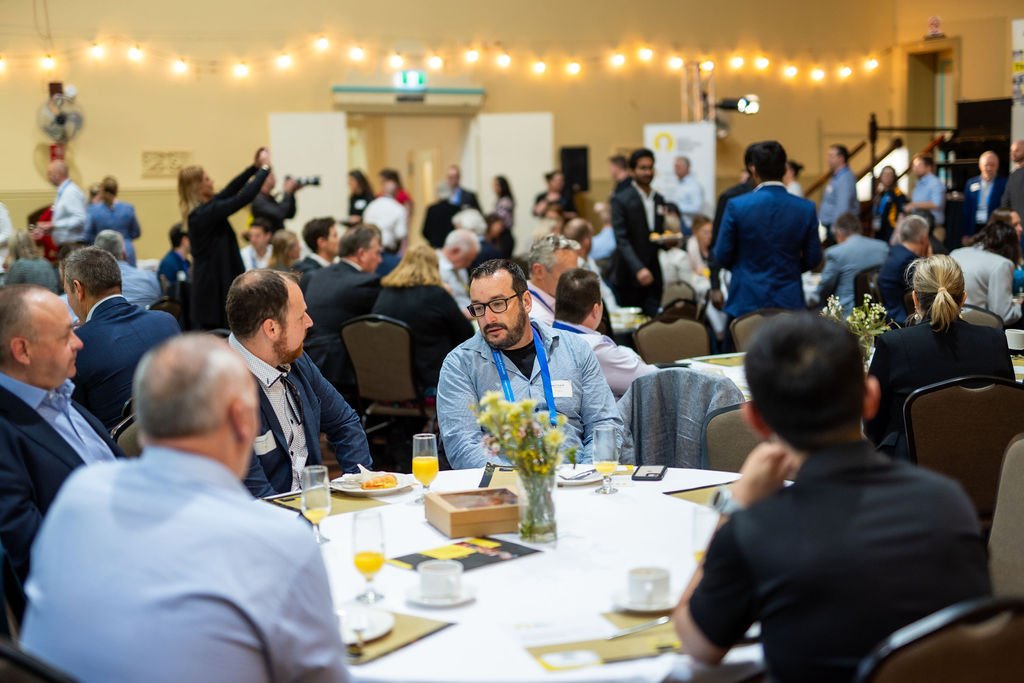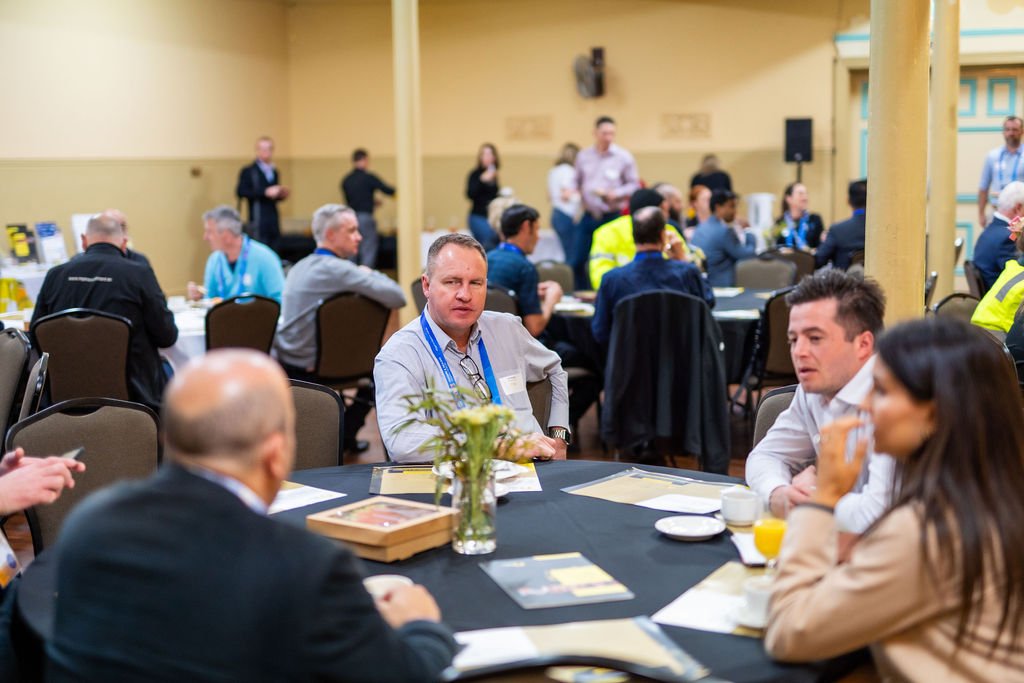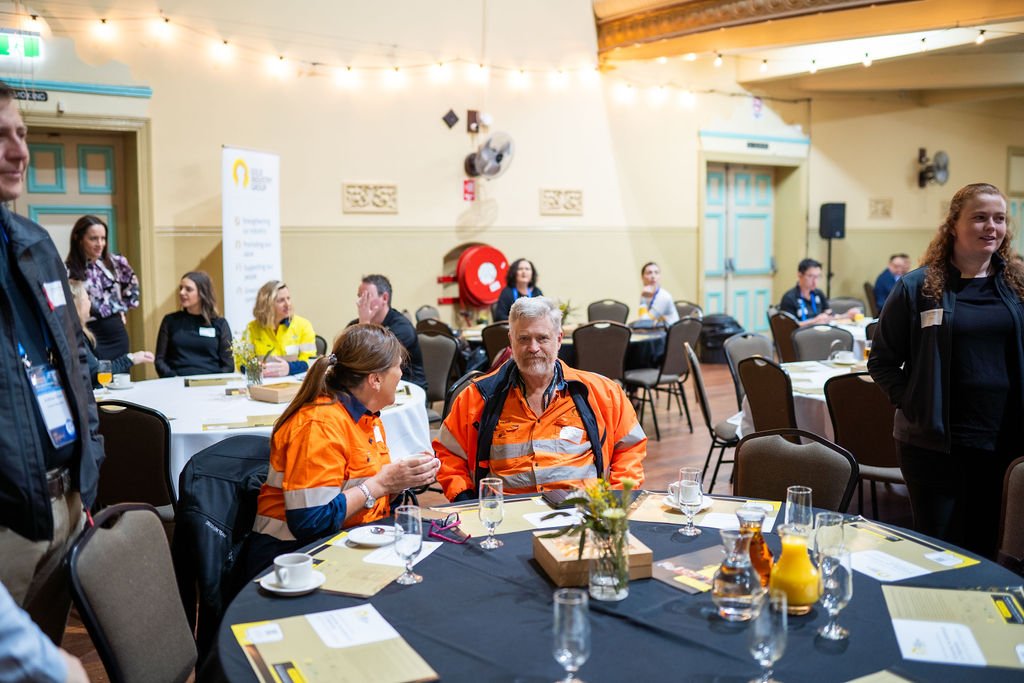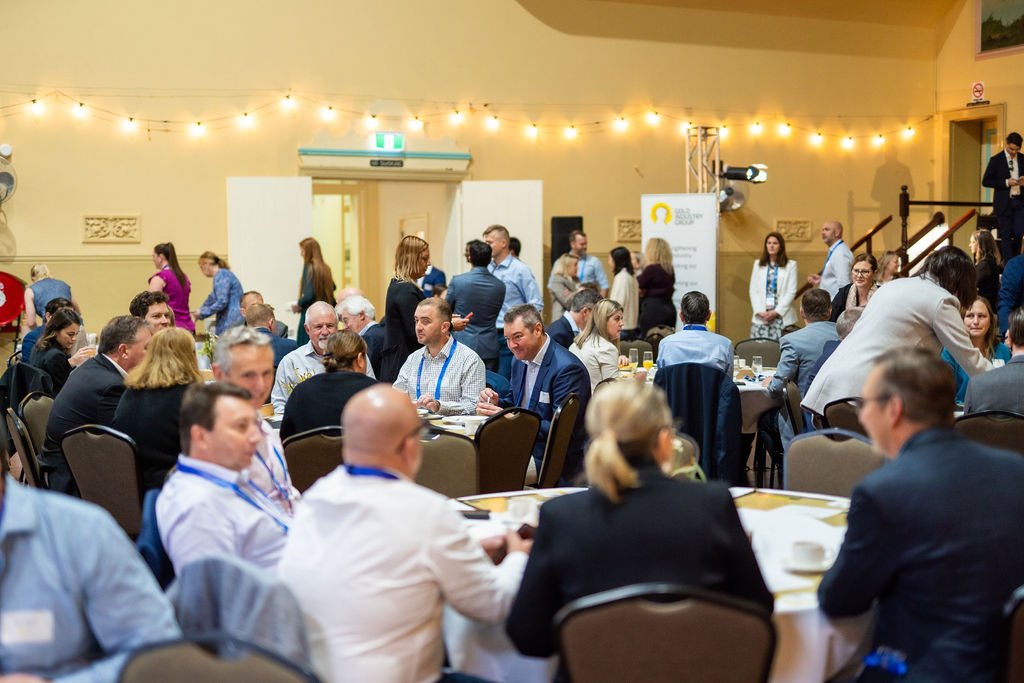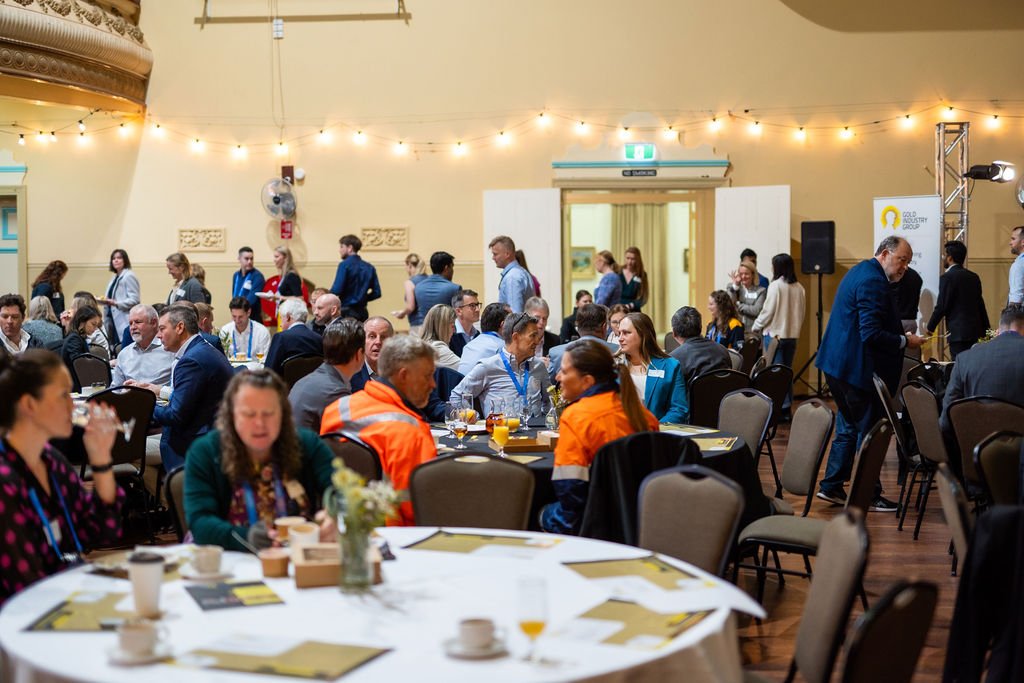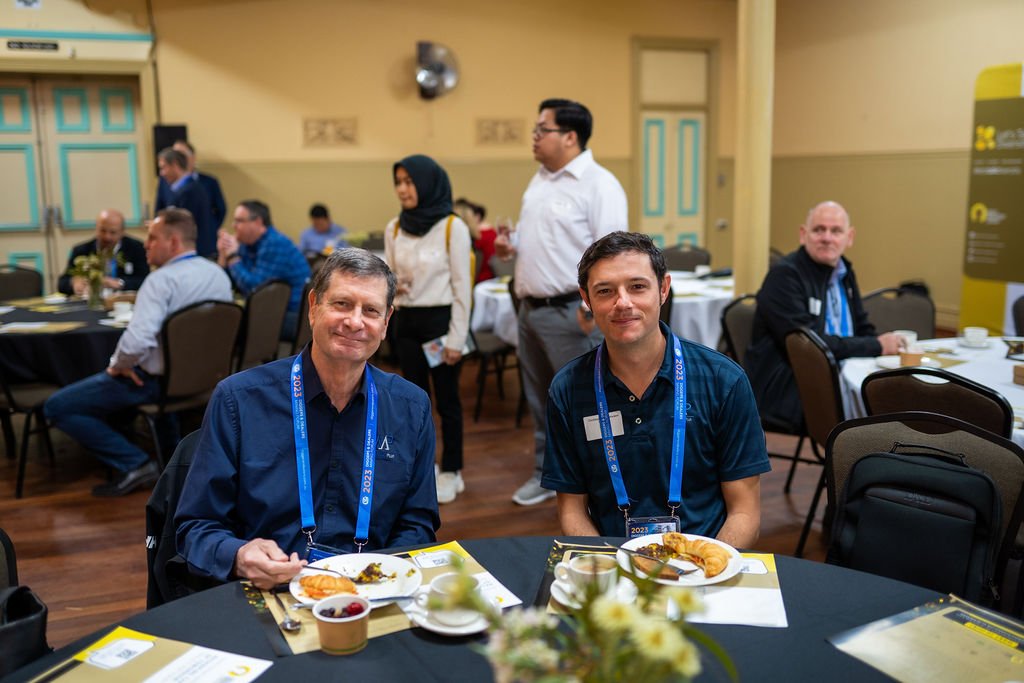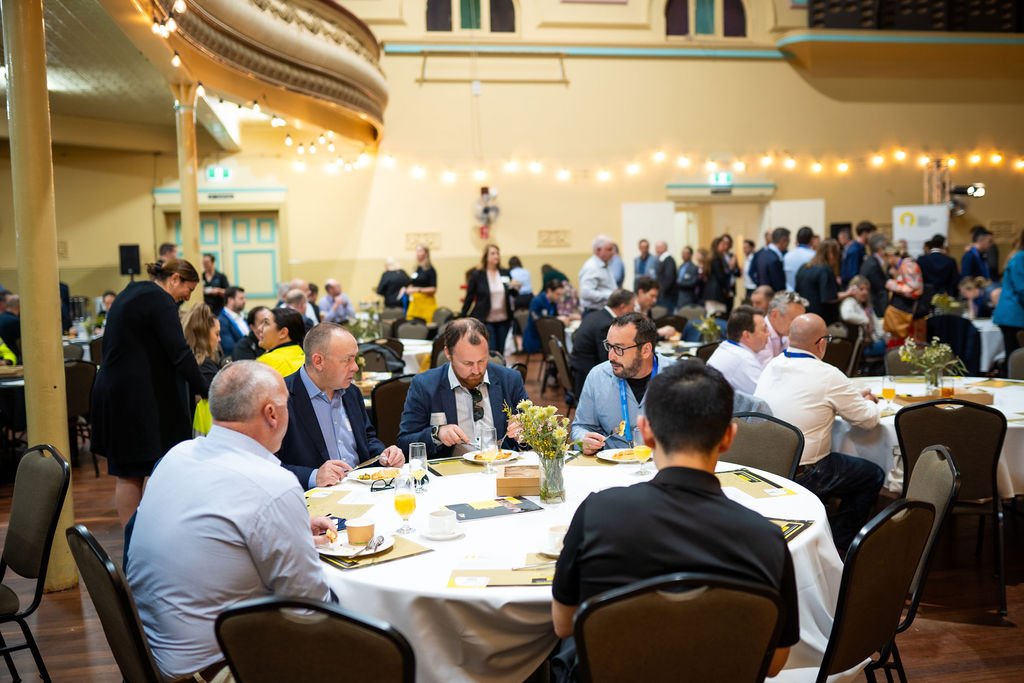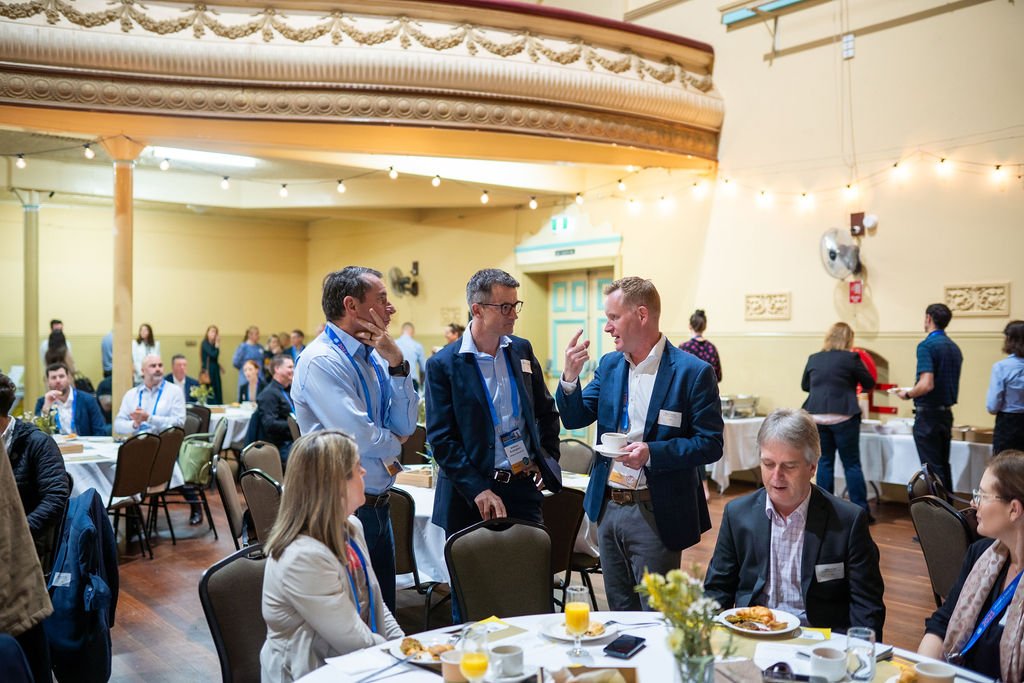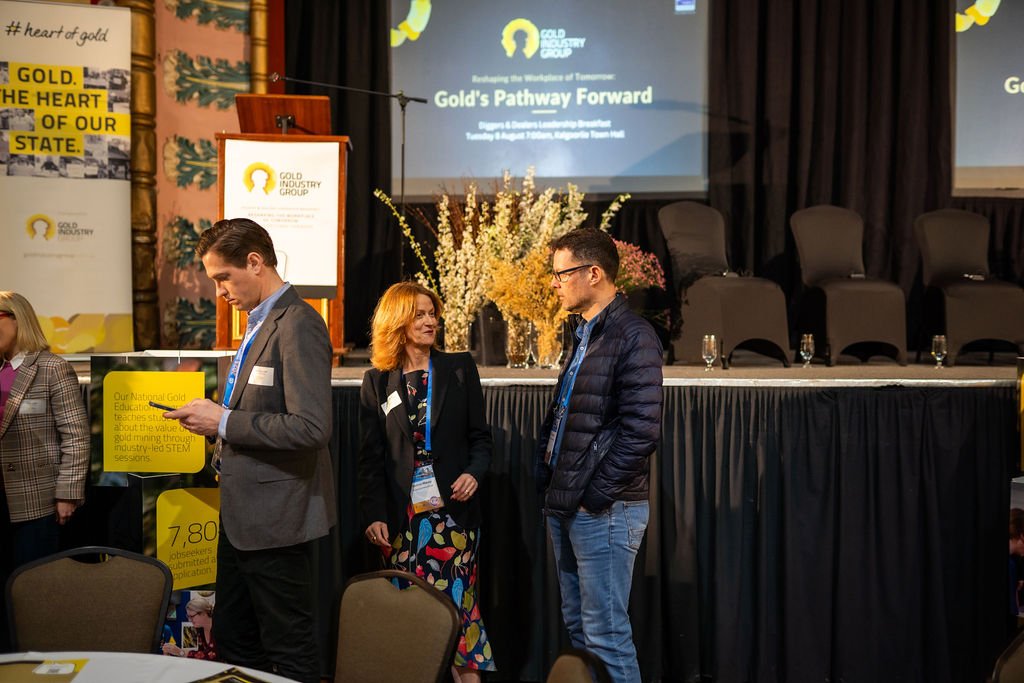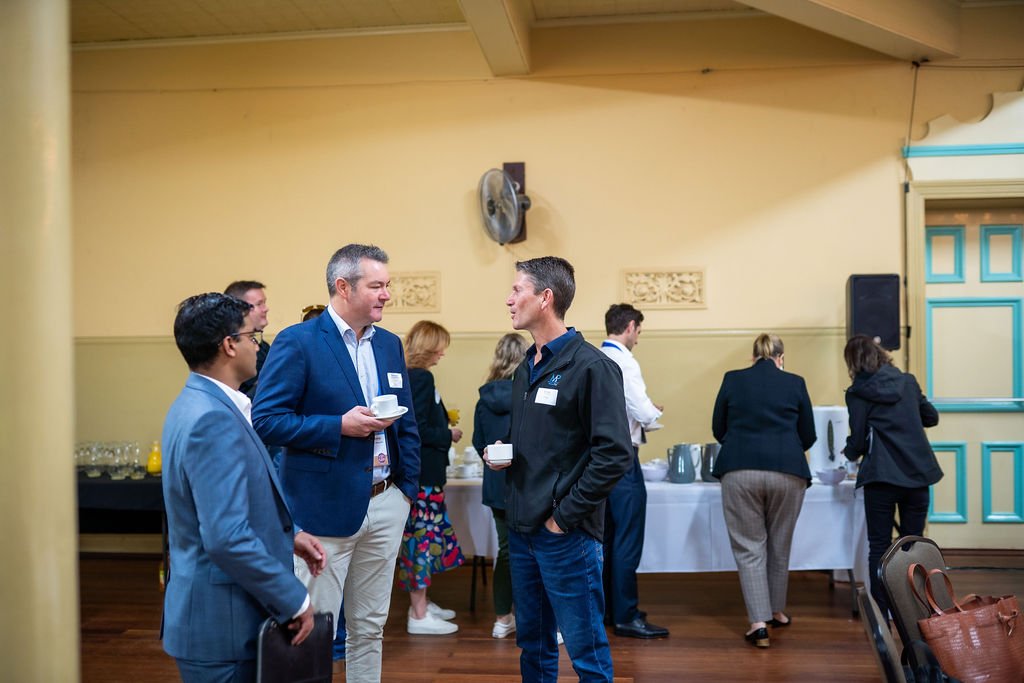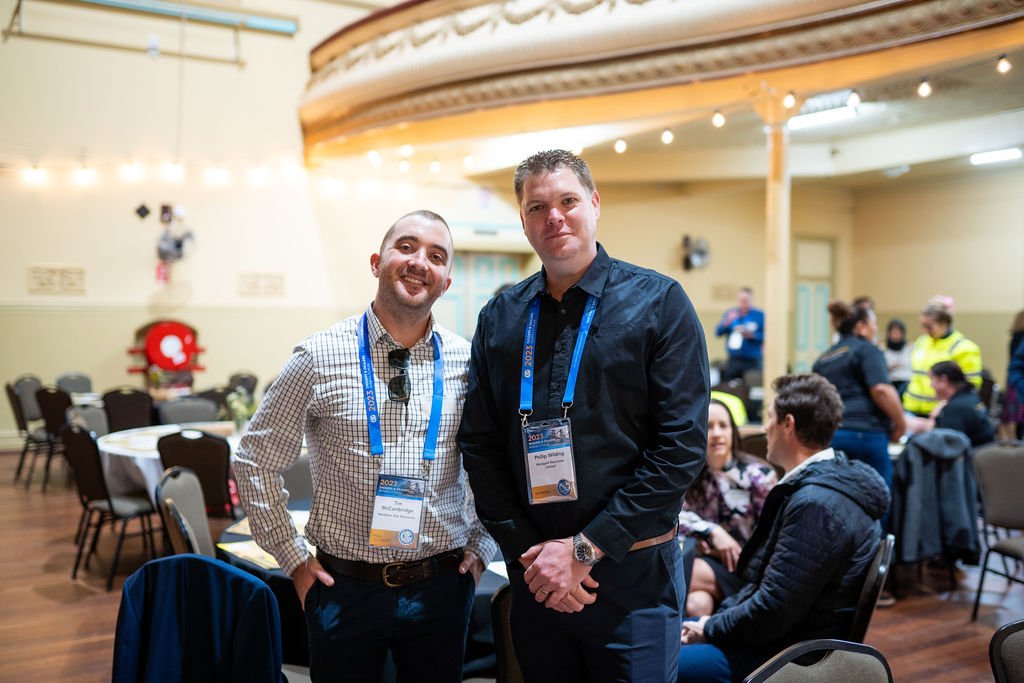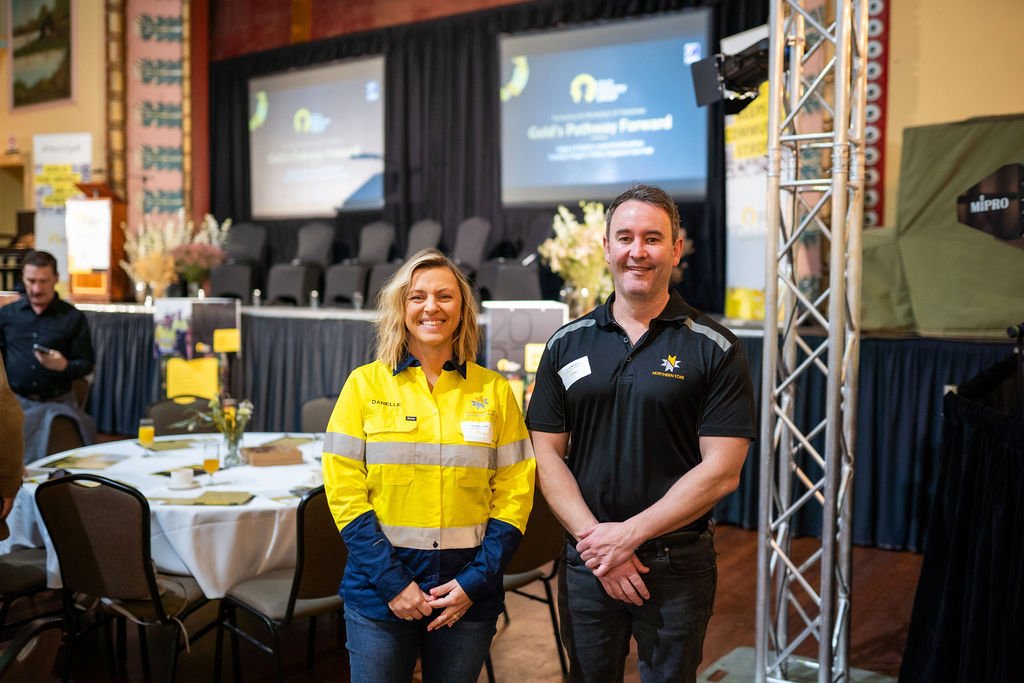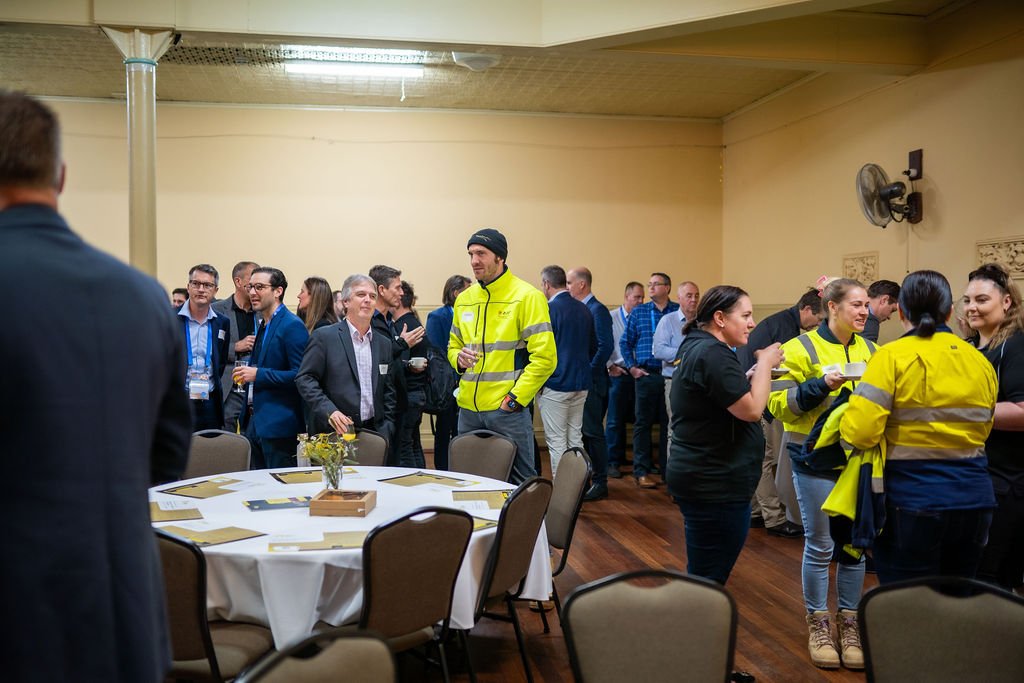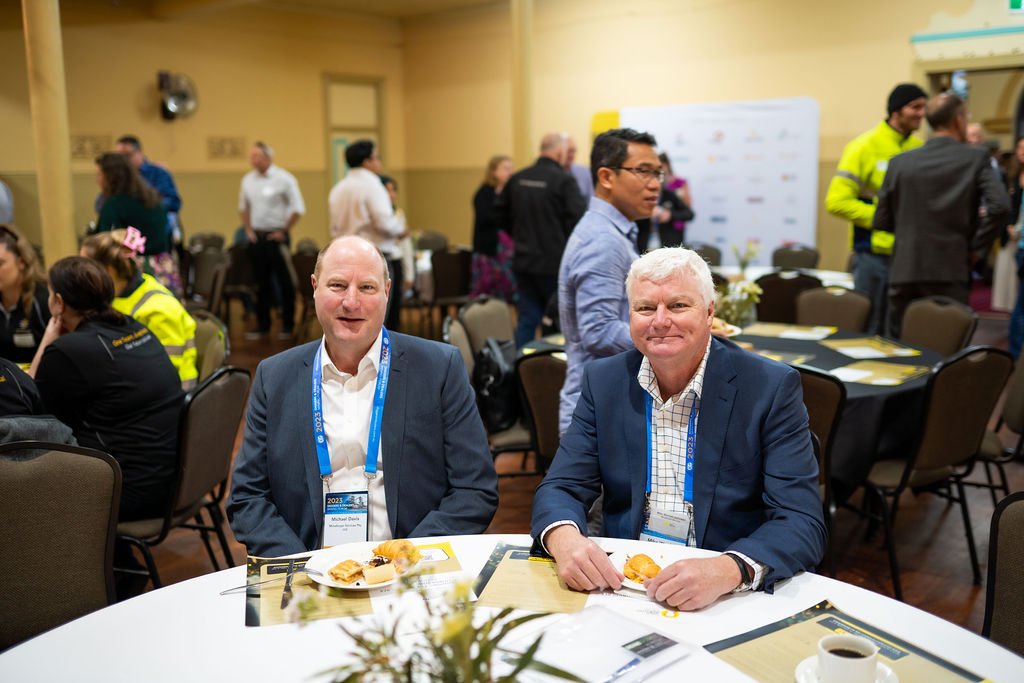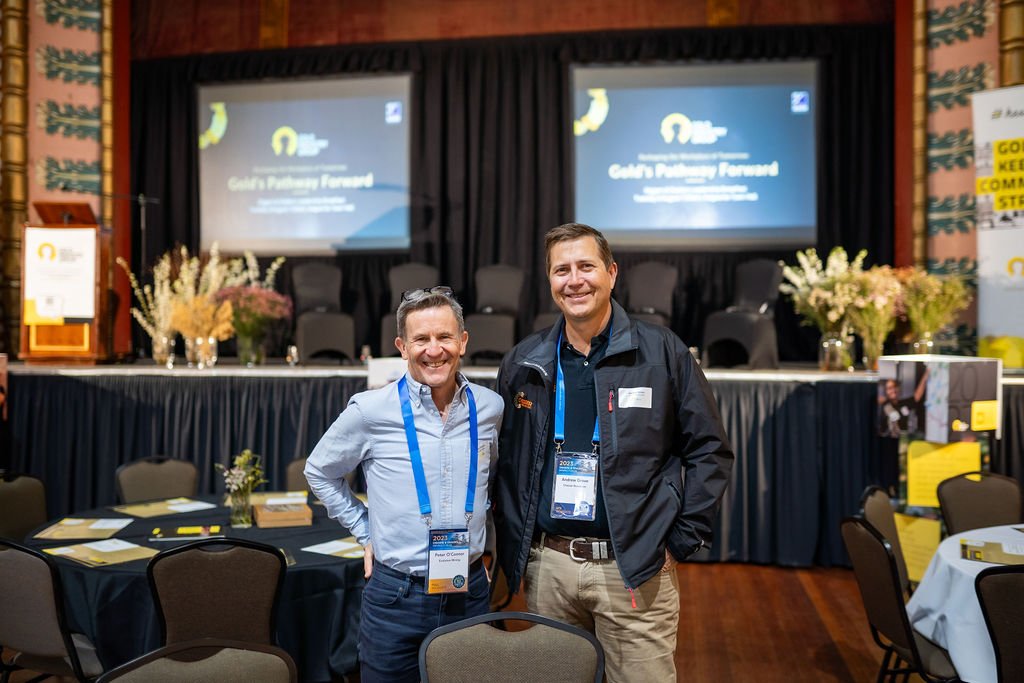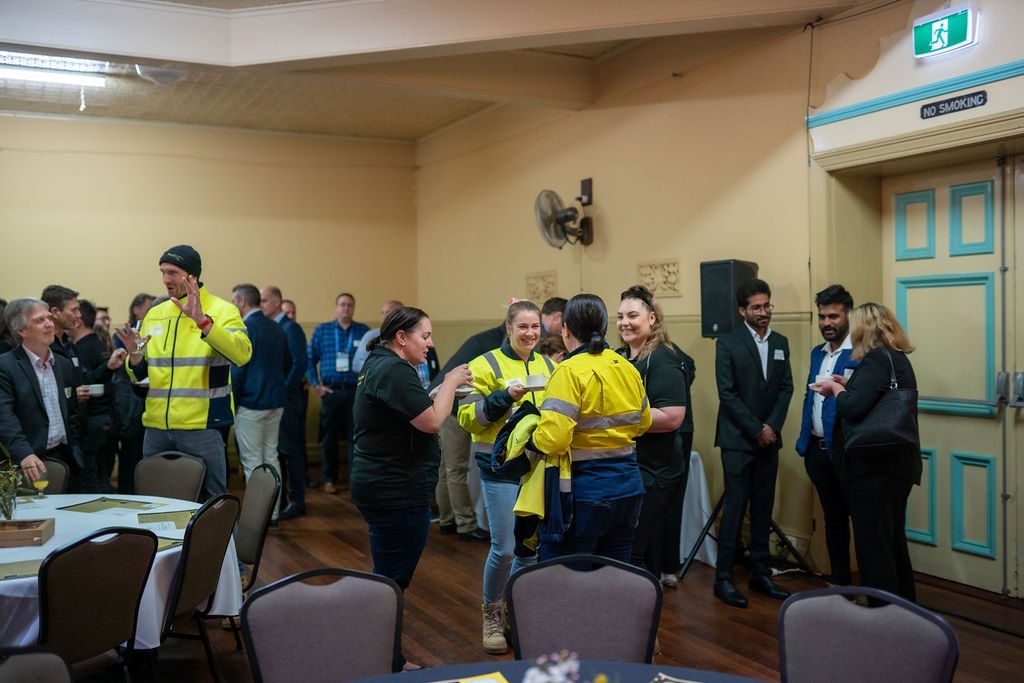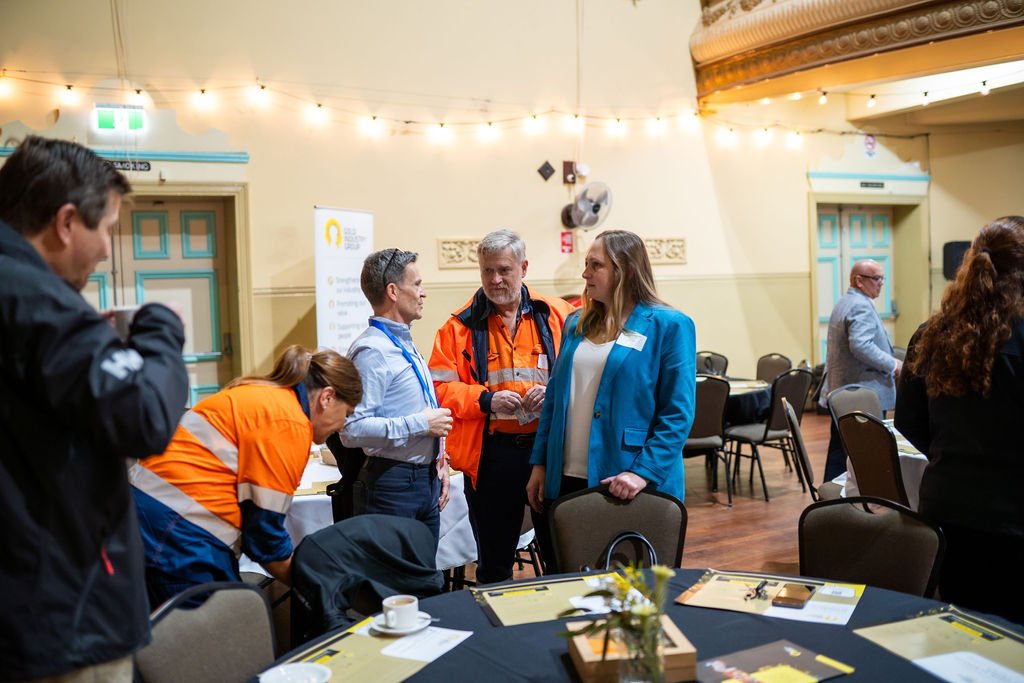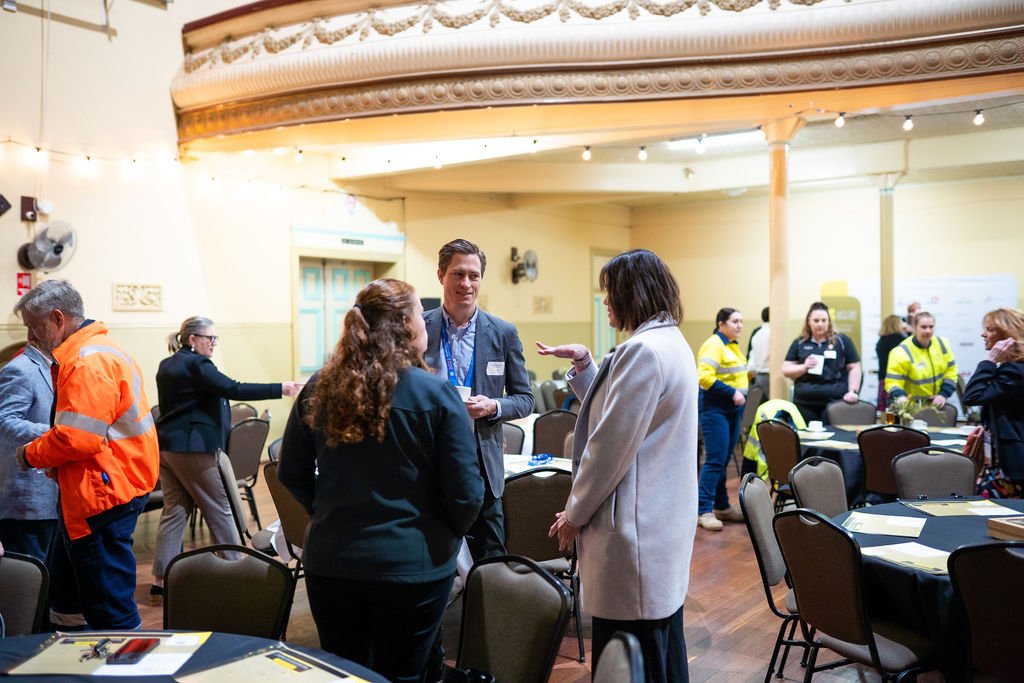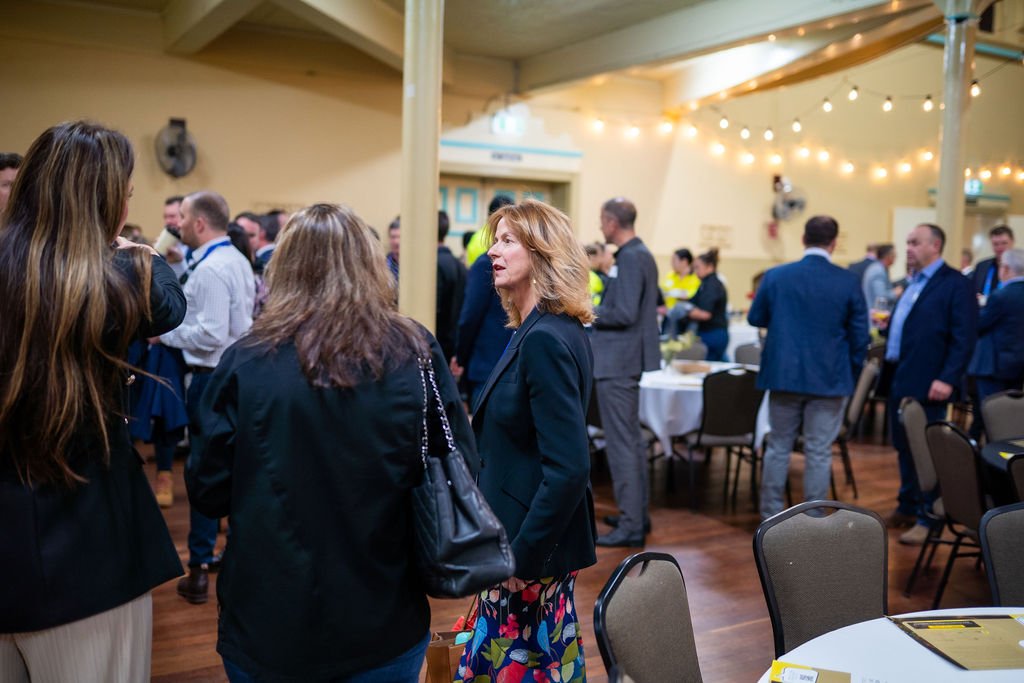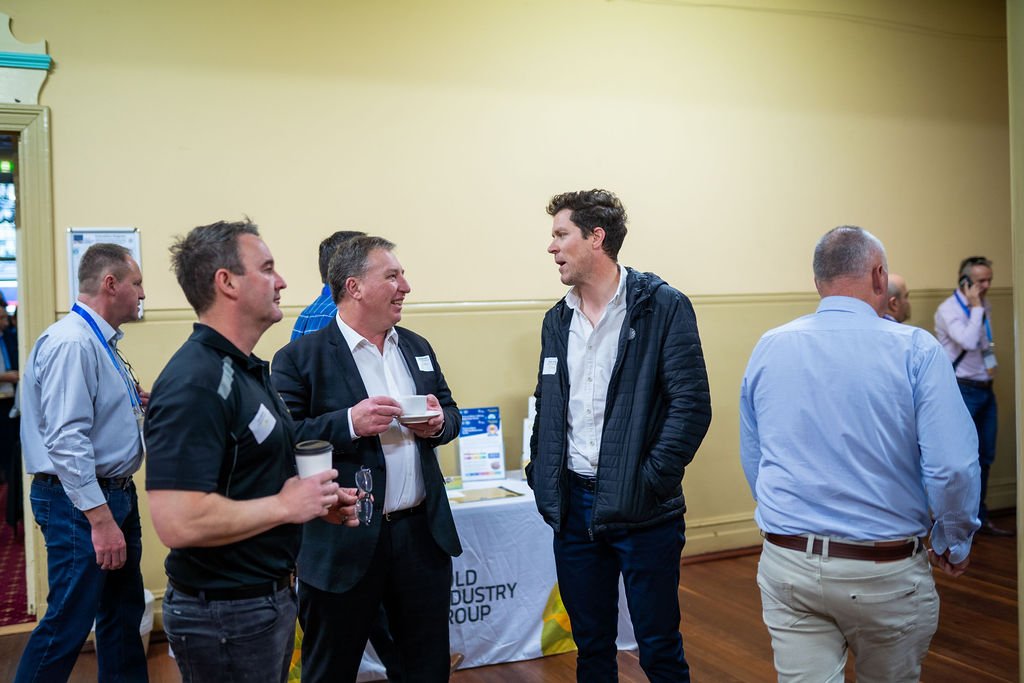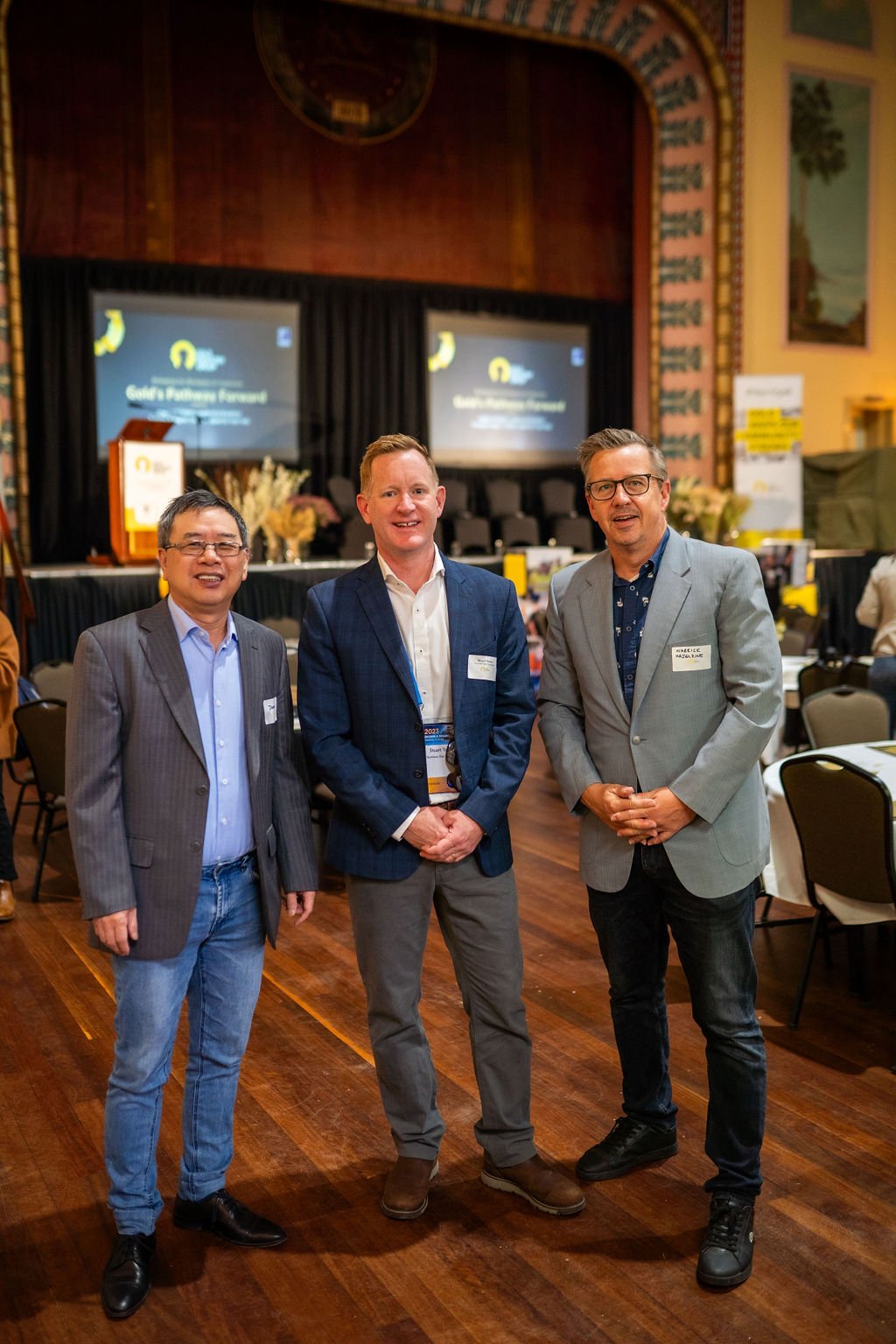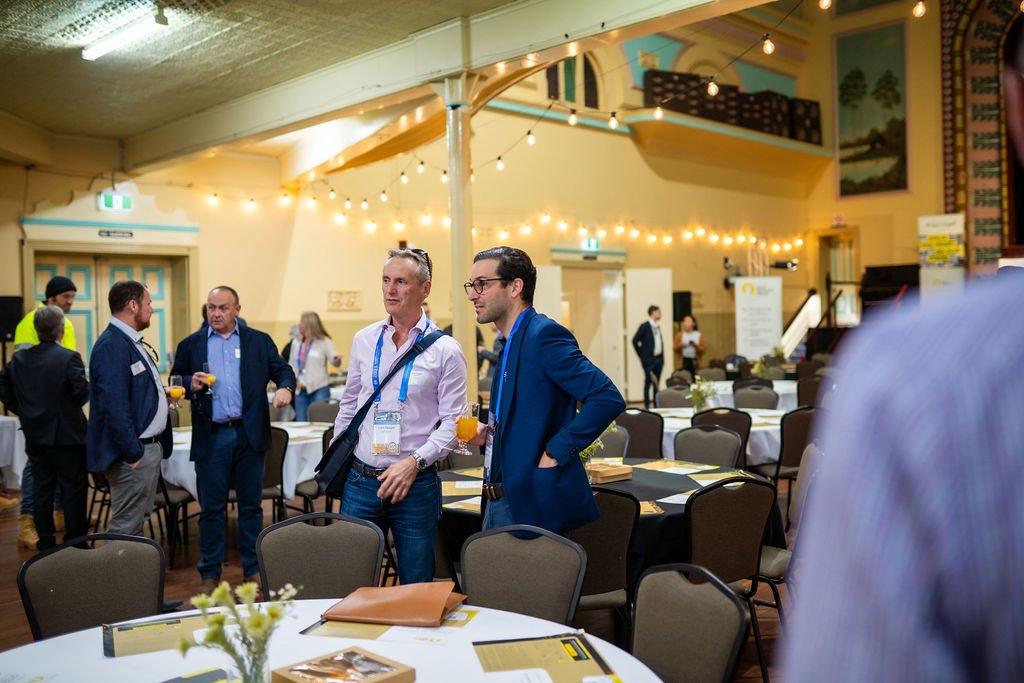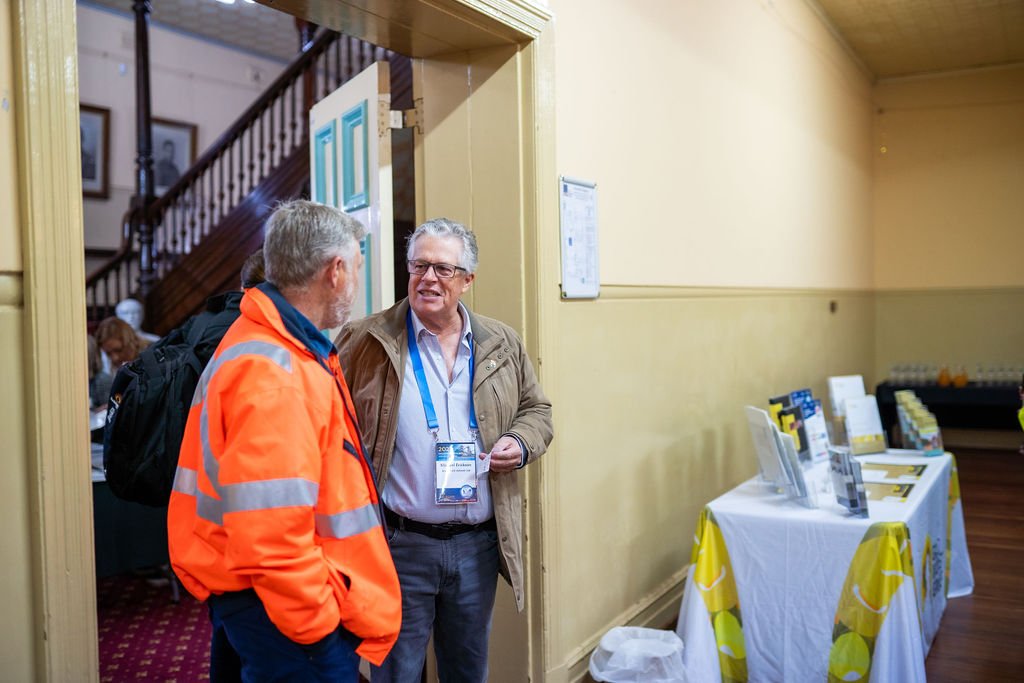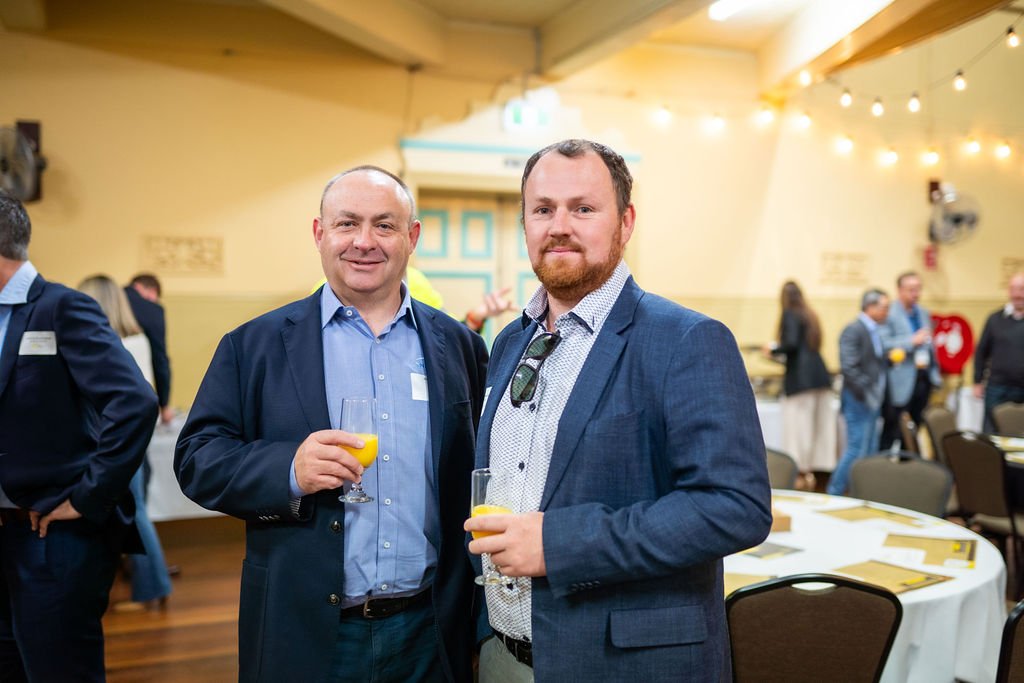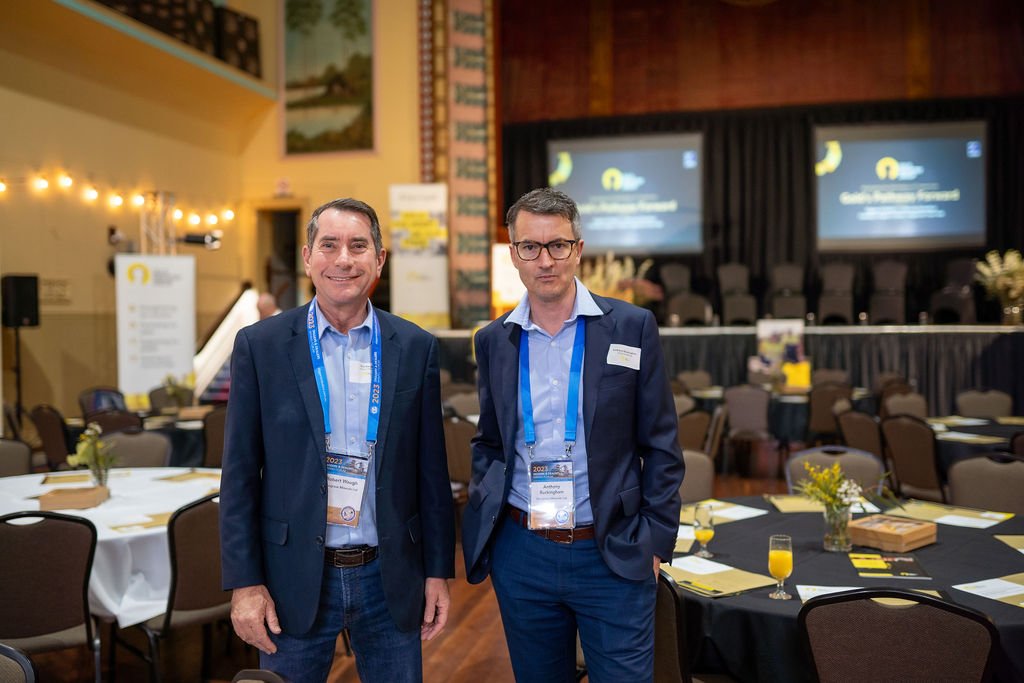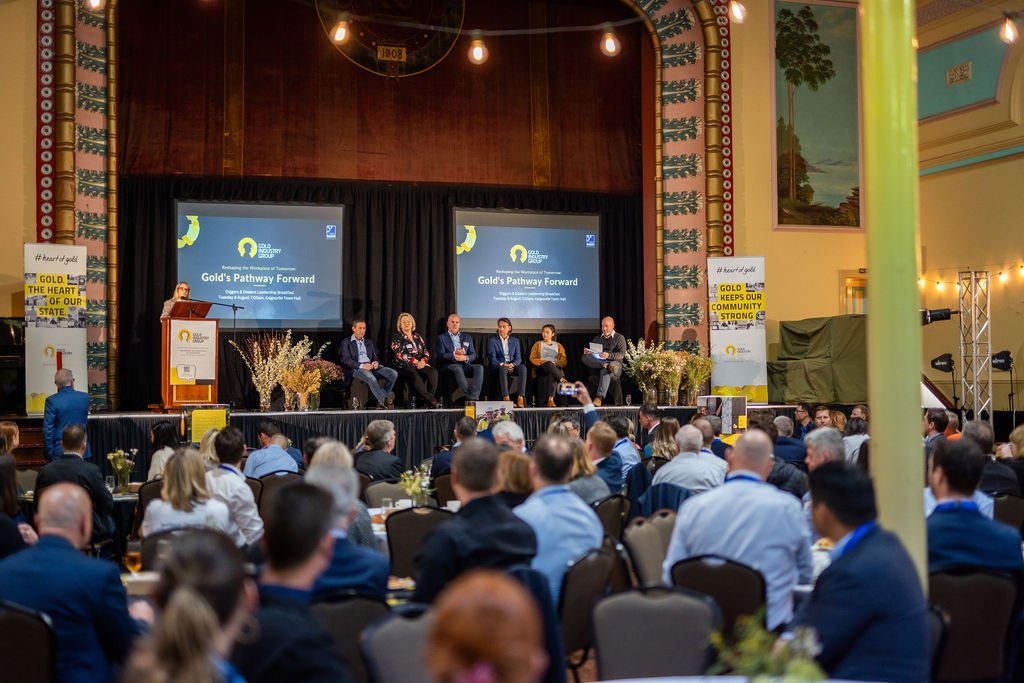Gold mining industry leaders are embracing an opportunity to establish a competitive advantage over other commodity miners by having the safest and most inclusive workplaces in the resources sector.
A panel of leading executives detailed their vision for the workplace of tomorrow at the Gold Industry Group’s Diggers & Dealers Thought Leadership breakfast event in Kalgoorlie-Boulder this morning.
The panellists, comprising Evolution Mining executive chairman Jake Klein, Northern Star Resources executive manager people and culture Marianne Dravnieks, Westgold Resources managing director Wayne Bramwell, Curtin University Future of Work Institute research fellow Cheryl Yam and NSW deputy chief scientist Darren Saunders, shared their views on how gold miners can accelerate an industry-wide workplace inclusivity push and how they see the sector evolving over the next 12 months.
“We’re making progress, but there is more to be done,” Evolution Mining’s Mr Klein told an audience of 180 delegates at Kalgoorlie’s historic town hall.
“The gold industry has a talent and skills shortage - we really need to be better at attracting and retaining people and getting them into our sector.
“We’re asking people to go to remote places and we’re asking them to live away from home for a long period of time, so we need to make that an experience which is both safe and enjoyable.”
While Mr Klein acknowledged implementing cultural change was not always easy, it was something the gold industry needed to address collectively.
“We need to lean into it, and we need to be authentic about it,” he said.
“A lot of the conversation has tended to be around gender diversity, but we need to start being more inclusive about all of the other minorities that could be attracted to our sector as well but may not feel safe and comfortable right at the moment.”
Northern Star Resources’ Ms Dravnieks agreed that gold miners needed to work collaboratively to affect a genuine cultural shift and set industry-wide best practices around diversity, safety, and inclusion.
“It’s about raising the bar across the industry,” Ms Dravnieks said.
“Anybody that’s been in the industry for a while remembers the safety journey that everyone went on, and there has been a shift.
“Zero Harm was not in the industry when I started, but it is now an expectation.
“We must lean into what we know how to do, which is to address data, address hazards, address unacceptable behaviour, model the right behaviour and teach our leaders how to address it.
“We know we have to do it, now we just have to take our knowledge, which is how we remove hazards and make good workplaces and apply it to this.”
For Westgold’s Mr Bramwell, the biggest obstacle to improving workplace culture is education, with many in the industry having different perspectives of what culture is.
“Even simple things like the words ‘appropriate workplace behaviour’ bring up different perspectives,” he said.
“We always try to dial it back to focus on something really simple - it’s about respect in the workplace and how you would like to be treated.”
Mr Bramwell said instilling an inclusive culture across the industry would help encourage those who don’t have a mining background to see the gold space as a community they want to be involved in.
“People need to see gold as a place which is innovative and also progressive,” he said.
“Those two things alone may differentiate gold away from some of the commodity industries that we compete against.”
Mr Saunders, who worked closely with Rio Tinto on its 2022 workplace culture review, Everyday Respect, said there was real change underway in the gold sector, but also acknowledged that it would not happen overnight.
“It is OK to be honest about the fact that while everyone is impatient at the end of the day, but it does take time to change culture, it’s a really difficult, sticky problem,” Mr Saunders said.
“You need authentic leadership - it’s not enough just to talk about it, you need to show what it looks like.
“There is often deep cynicism in workforces around leaders talking about things but not necessarily demonstrating them.”
Mr Saunders said it was also crucial that organisations put the right resources, and the right people, in place to affect cultural change.
“You need to put some money into it and hire some people to do it properly,” he said.
“Now that’s hard in smaller companies, and that’s maybe where industry wide approaches have a role to play.
“But culture won’t change itself, you need to actually do it specifically.”
Curtin University’s Ms Yam shared Mr Saunders’ view that affecting cultural change started with an organisation’s leadership group.
“It is about modelling the behaviours that you want to see in the industry,” Ms Yam said.
“You need to lead from the top and make sure that there is a flow down effect to all of the different levels of leadership, because those are the people who are on the ground who are then demonstrating the behaviours and values that your company holds.”
